|
Volume 2 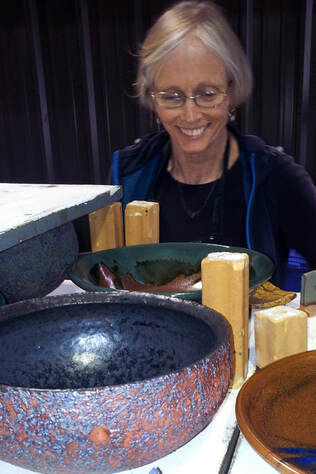 Ginny Marsh opening the kiln Ginny Marsh opening the kiln Ginny Marsh I work at my home studio in Richardson, Texas. I recently “retired” after serving for a decade as Resident Artist at the University of Dallas in Irving, Texas where I also taught courses on the history of ceramics. Most of all I reveled in the energy and curiosity of the students there. I earned my bachelor’s degree at DePauw University in Greencastle, Indiana and my MFA at the Ohio State University in Columbus, Ohio. I then moved to the hills of southern Indiana where I lived on a small organic farm for thirty years, planted 800 trees, had a studio, raised a family, worked as the Editorial Advisor on Ceramics for Chilton Books, and taught ceramics at the University of Louisville, Kentucky before returning home to north Texas. Assigned as an undergraduate advisee to Professor Richard Peeler, I signed up for Ceramics class and was hooked the first week. Even if commercial clay bodies had been available in those days, Peeler would have made us mix our own. He took us to the local clay mine and had me mixing all my own glazes and doing firings from the beginning. By the second year, he conscripted me into helping with kiln construction. My graduate school glaze chemistry professor, Margaret Fetzer, and longtime mentor, Karl Martz, gave me skills and nurtured further curiosity in developing my own glazes, which I still do. This includes the local ash glazes which I love, and which ground my work where I live. Each of the cups in this show has ash glaze. I like fire. I like kilns with burners or that use wood as fuel, and in winter heated the house and cooked on a wood stove for 30 years. I fire most of my work at home in the gas kiln in my back yard but participate in other kinds of firings with friends. Community really can’t be separated from making or using pots. A gallery of some of my work is on my website. I exhibit in a variety of exhibitions, participate in a local studio tour every fall and sell work at benefit sales at the Craft Guild of Dallas, which brings together artists using many materials. Reggie Pointer I was born in Washington DC and raised in Massachusetts. Currently, I am an Associate Professor of Ceramics at Howard University. In addition to doing pottery, I teach printmaking and 3D design. When not teaching I am designing and playing games. Much of the time there is an educational component to the game I develop. I had taken pottery classes as an undergraduate. But pottery became serious for me when I discovered I could make money with it. And the added bonus for me was that I could make functional objects that met my needs as a cook. I mostly work with stoneware. I do all the processes available to me with no real preference toward any one of them Hand building, wheel work, slip casting are all points for departure. To get fast results I often do raku if food or drink is not an issue. I make about 75% of my glazes when working with stoneware. My favorite piece in this show is the piece titled "Divided we stand united we fall". It attempts to address the two sides we face regarding the history of this country. I make a few works every year that address current social concerns. I was struck by the comment that there were a few bad/good people on both sides. Put water in either vessel and, strangely, it tastes the same? I enjoy making cups. I enjoy trading/ selling cups. The opportunity to share my vessels with others is a pleasure. I collect vessels from all of my pottery friends and have a cabinet overflowing with cups. I'm on FB and currently working on my website. I have an Instagram account, but exhibit nationally when I can so keep your ears and eyes open. 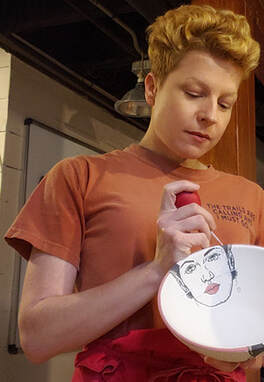 Lara Popowitch Lara Popowitch Lara Popowitch I am from Aurora, Illinois. I received a degree in Fine Art & Business. My early career was in commercial art doing graphic design and India ink illustrations for government and non-profit organizations. The imagery on my ceramic work references the scientific study of societal beauty standards. I was doing a lot of commercial illustrative work and was looking for a different creative outlet for my own ideas. A local community college was the answer. I took some ceramic classes and was pulled in. Clay is outstanding because there are enough facets to stay challenged and engaged with it for many lifetimes. I have a home-studio, so I wish to be careful about my mess I make. I use commercial products, so I don't need to be concerned about the dust associated with handling raw materials. The clay I use is English porcelain. I throw and trim the form on the pottery wheel. The surface design is drawn and painted on with under-glazes. It is covered in a coat of clear, gloss glaze. Using an electric kiln, the piece is fired to cone six. My favorite piece would be the spirits cup named Face Sequence. Everything about it made me smile when I unloaded it from the kiln. The imagery fits well and looks clear and precise. I felt compelled to continue going down that rabbit-hole of thought. The honest answer is location [in applying to this show]. One of the last family road trips I went on with my parents and brother was to Colorado. The four of us were spellbound by the state's beauty. Having the opportunity to share my work with you and to be in that gorgeous locale was my motivation. If I can't personally be there to enjoy it, at least my art can stand in my place. I have both Etsy and Instagram accounts with the name ClayVein. You can see more about me and my work at either of these locations. Derek Redding I am the owner of Flux Studio & Gallery in Denver, CO. For 16 years I worked as a driller for a geotechnical contractor. In December of 2016 I resigned my position and opened the studio. There I focus on small batch functional wares, for both wholesale, and retail. I also teach classes 5 nights a week, to about 24 individuals a month, from beginner to advanced students. I work in both stoneware, and porcelain, and focus primarily on wheel thrown vessels. Everything is fired to cone 10 in a reduction atmosphere. I was first introduced to ceramics as a high school student where, we had an amazing facility. We had an excellent and knowledgeable instructor who, was well versed in several artistic disciplines. We also had access to high fire glazes, several kilns, both gas and electric, as well as raku firings, and many others. We also learned how to formulate and mix our own glazes from raw materials. It was a great experience, and because of it, I was catapulted forward into the clay life. All of my glazes are mixed in house from raw materials. I run about 20 different glazes from traditional shinos, pale celadons, colorful copper reds, and too many others to list. I prefer the glaze results, and the translucency of working with porcelain. However, a rich and rustic stoneware mug can be just as warm and inviting. I fire in a 20cuft gas reduction kiln to cone 10, or 2380 deg F. I have been influenced lately by an old world, and traditional form. I share the building with a world renowned architectural antique dealer and have found myself drawn towards many of their clay and glass relics of the past, that are found in their shop. I have been creating the Tankards for some time now. I purchased an 1820's English Tavern Tankard and have replicated the form. The transformation of the pewter tankard to ceramic gives new life to the archaic, and eye-catching shape. 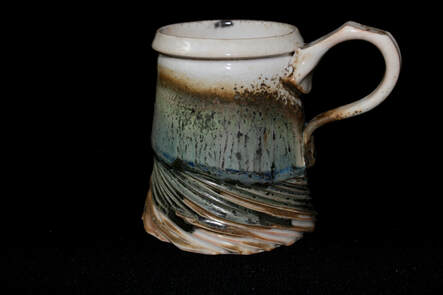 Carved Porcelain Tankard by Derek Redding Carved Porcelain Tankard by Derek Redding My favorite piece for this show is the Carved Porcelain Tankard Coffee Mug. I was pleased with the execution, and final product of the standard tankard I had been producing on the regular. I was making about 100 tankards a month and wanted to add a new twist to them. I really wanted to make the shape my own. So, I began to carve the body of the mug, and chiseled out the top of the handle. As well as create a more elegant, and ergonomic grip. The carving, it started as just random squiggly lines with no rhyme or reason to assist in catching and channeling the flow of molten glaze. After many failed attempts, and honestly some really ugly mugs, they evolved into whimsical, dynamic, and truly unique pieces. Where, I could not only channel, but direct the hot glass to accentuate certain elements of the form. I was inspired to apply for this show by a friend on SM. My work can be found online in my Etsy shop: https://www.etsy.com/shop/FluxStudioDenver In the Gallery of the studio: 377 S lipan St Denver, CO 80223 Our facebook page: https://www.facebook.com/FluxStudioDenver/ Our Instagram: https://www.instagram.com/fluxstudiodenver/ Mark Rossier I am a homebody, a cook, and a family guy, which fits well with being a self-employed artist working from home. My studio and home, in the little town of Niwot, are very much my own creation with my own hands and my family’s patient support. I wanted to create it so my two daughters, Chloe and Susannah, would know what I do for work and to be around when they were, and I wanted to be able to support my wife, Ellen, in her demanding work. We love music, so instruments vie for space with pots and books and treasures collected from our travels. And a walk out back to the studio usually includes a stop at the garden and chicken coop. The four of us have made a very lovely, personalized home that takes care of us. In the middle of working towards an undergrad art major at Grinnell College in Iowa, about 1983, I took a semester off to build wooden boats on the coast of Maine and get off campus. What my boatbuilding clarified for me was that I love working with tools and in three dimensions. Back at school, I was contemplating building a boat in the middle of campus when my advisor wisely suggested that I instead take the ceramics class. Ok, it fit in my schedule. I was already drawn to traditional craft and its artistic expression, but clay had such broad possibilities and deep roots—I was smitten. Right after graduation I decided to find a potter to work for, just to see if anyone made a living anymore as a potter. That decision turned into a seven-year apprenticeship at two different potteries and subsequently setting up my own studio. My training is definitively production oriented, so I have always tended to work with those concerns in mind as far as clay, glazes, and the numbers of pieces I produce. I primarily use a locally formulated and mixed clay, as opposed to digging and processing my own. These days I am drawn to and experiment with many temperatures and processes, but I mostly work with a mid-range red stoneware that I electric fire to cone 7 (though mid-range porcelain, wood fired pieces and pit fired Ancestral Puebloan reproduction work all shows up in my studio). I like a quick feedback loop to see the results of what I’m doing, so I’ve slowly shifted from a 60 cu ft gas kiln to my small electric kiln. I am, frankly, a glaze mixing evangelist. Working with glaze chemistry, and teaching it too, are very important to my expression as a potter. 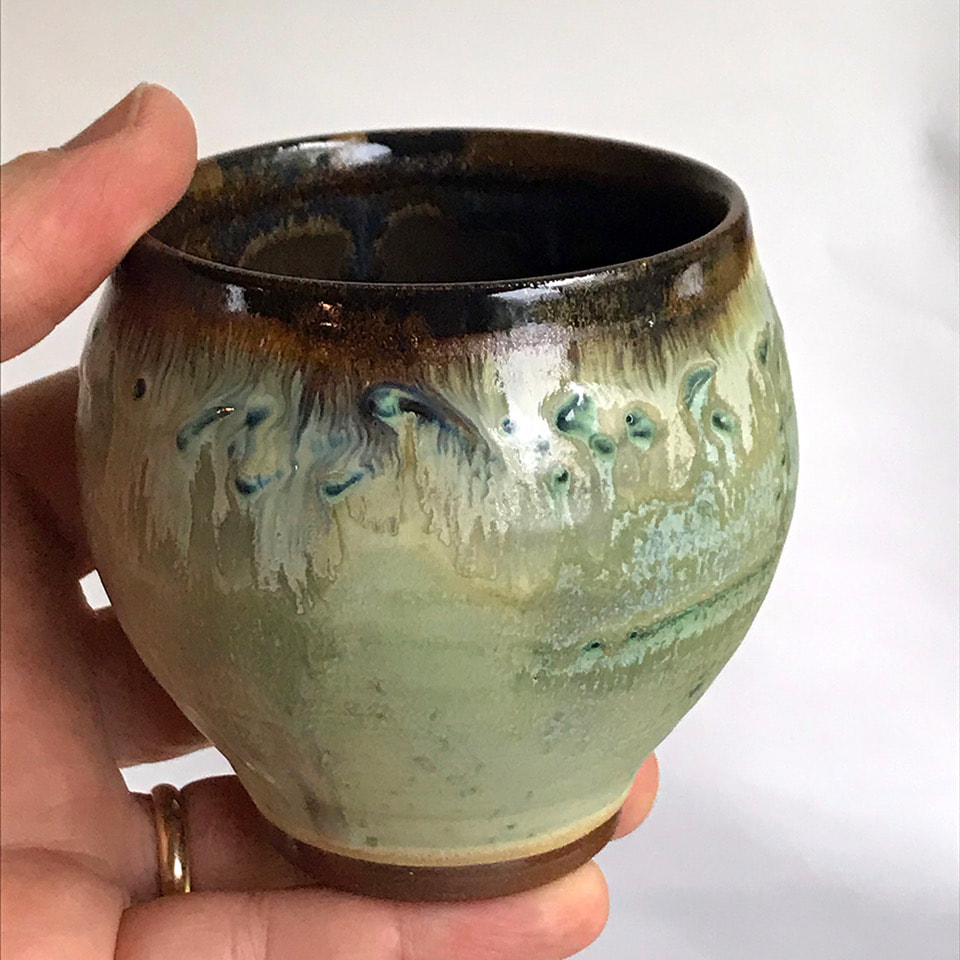 Mark Rossier Mark Rossier I think my favorite is the Desert Sipping Cup. Perhaps it is because it is the most recently discovered glaze combination I’m exploring, but this form is one I keep returning to because of its elegance in your hand. The glazes were a surprise in how they work with each other, but their feel comes right from the desert landscape of southern Utah that we visit religiously every springtime. To me, there is a perfect combination of control and surprise in the fired surface. The colors of this piece are all possible because of a layer of slip behind the scenes. This is a great example of why I make my own glazes. And that coppery gold rim—you gotta love that! Mugs and cups have always been ever-present pieces for potters of all traditions. But they used to be the “loss leader” in the shop, the pieces that brought folks in the door and were sold too cheaply to that end. Now, cups and mugs are elevated to the complex collectible pieces they truly are, at least in the US, and because they can command such prices, they demand such care. I like that and think that is as it should be. I, like many potters, love to collect mugs and cups from other potters and know that we all use them as an important form for our self-expression—as well as to sip from. I consider Commonwheel to be a venerable Colorado clay gallery and I like to be included in exhibitions that show the best of our local potters. Go to my website (www.markrossierpottery.com)—there is always work for sale. Follow me on Instagram (@markmudman), because I will soon be advertising sales there and you’ll stay most current with what I’m doing. La Veta Gallery on Main in La Veta, CO carries my work as does Radius Gallery in Missoula, MT. But the best place to find my work is my studio showroom in Niwot that is truly open 24/7 with a wide selection of my work. 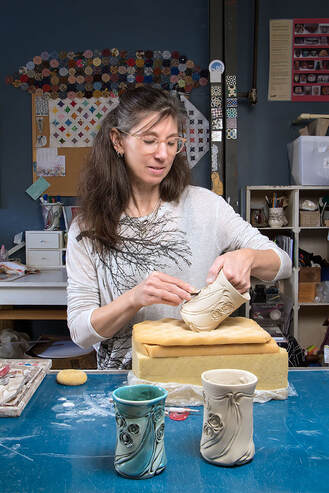 Lora Rust in the studio Lora Rust in the studio Lora Rust Since 2008 I have been a studio potter and pottery instructor in Atlanta, GA, selling my work at my studio, local and regional art sales, exhibits and galleries. Sharing my love of working in clay, I teach beginning and intermediate pottery classes at the Callanwolde Fine Arts Center in Atlanta with concentration in the soda firing process and workshops nationwide demonstrating my unique texturing process of pushing the clay. My mother was a collector of pottery. We had loads of pottery all over our house and used it daily. When I had to take an art class in high school, I chose pottery. I use porcelain, a cone 6 porcelain by Laguna clay. I throw, alter and texture my pieces. My stylized technique of creating my designs and texture is a unique process of striking and moving clay with personally designed tools. Porcelain allows me to sponge the marks after I make them at soft leather hard, giving the designs a lush and flowing feel. I fire my work to cone 6-7 in my soda kiln in Blue Ridge, GA. Sodium vapors glaze the exterior of each vessel, interacting and uniquely highlighting the form and surface. I make my own glazes. This allows me to get the exact effect that I want for my pieces in the soda firing environment. 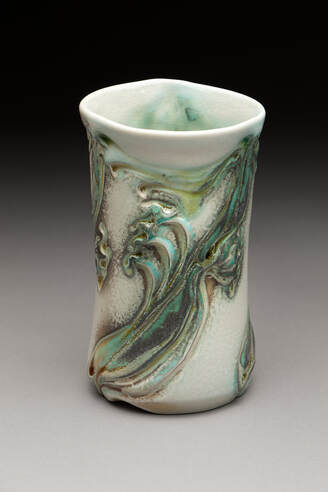 Dragon flower Tumbler by Lora Rust Dragon flower Tumbler by Lora Rust My favorite piece in this grouping is the Dragon Flower Tumbler. This pattern flows nicely on the taller tumbler form. The results from the firing were exceptional (soda fired, cone 7). The copper highlights from the exterior reacted in a spectrum of greens. Because of the variation in the surface of the porcelain, the copper migrates through the piece and can be seen on the inside. I was accepted in the show in 2018 and received overwhelming and enthusiastic support for my work at the co-op. Commonwheel honored me by placing an image of one of my mugs (the Bony Mug, also in the show) on the Call for Entry card. :~) My website LoraRust.com has expanded background and biographical information as well as an online shop, featuring my texturing tools. I also have a presence on Facebook - Lora Rust Ceramics and Instagram @lorarust. I am represented by Charlie Cummings Gallery, Gainesville, FL; Ember Gallery, Chattanooga, TN; The Bascom Gallery, Highlands, NC; Macon Arts Gallery, Macon, GA Lora Rust Ceramic Designs 404-805-0979 [email protected] www.lorarust.com 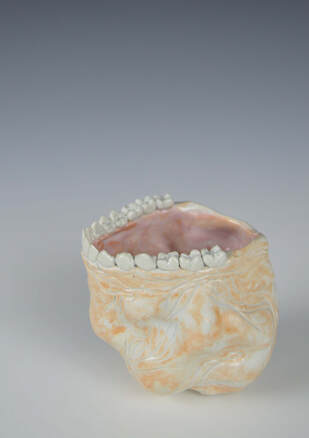 Tooth Cup by Sara Torgison Tooth Cup by Sara Torgison Sara Torgison Sara Torgison is a potter and sculptor currently managing the fine art studio facilities at the University of Dayton, OH. Sara grew up in San Diego, CA surrounded by art, music, sea and sky. She holds a BFA from Humboldt State University in Ceramics and has worked at various community arts organizations in the Dayton area. I became interested in pottery in high school, but didn't really get into it until my second semester of college. HSU has an amazing ceramics department and it became my second home. I took every student assistant position I could get in the department, and slowly gained the knowledge base that prepared me to take on positions managing ceramics departments in the Dayton Ohio area (where I moved after I finished my BFA). I have been incredibly fortunate to work with local artists, firing their work and working alongside them in the studio. The strong sense of community among ceramicists has been a continuous source of inspiration in my life. I typically work with cone 10 porcelain or stoneware. I either throw and alter my vessel forms, or hand-build, adding hand mixed engobes and glazes in layers. I fire in either gas reduction or wood reduction atmospheres and find that, while I often prefer the results and community aspects of wood firing, gas firing is my personal comfort zone and a quicker, less taxing process. My favorite piece I submitted for this show is the reduction fired tooth cup, because it was the first one that came out using the engobe technique I developed and I was so excited by the results. I had seen calls for the exhibition come up in the past, but missed the deadline. I love making and collecting mugs and cups, so the theme appeals to me. I am honored I got to participate this year! My work can be found at saratorgison.com 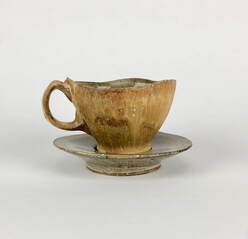 Teacup and Saucer by Lauren Visokay Teacup and Saucer by Lauren Visokay Lauren Visokay I am a ceramic artist and geologist from Charlottesville, VA. I enjoy making ceramic work that incorporates elements of geology, both through form and surface and by incorporating raw materials such as native clays. My life and work have been influenced by my time studying geology at The College of William and Mary, where I was lucky to take multiple travel courses to study geological aspects of places such as California, Arizona, Utah, Nevada, and Oman. Recently I have been wood firing as an Artist in Residence at the Cub Creek Foundation in Appomattox, VA. Along with being a ceramic artist, I am a runner and an animal lover. I was lucky to go to a high school with a great ceramics program, where I took ceramics classes and developed a passion for clay. My interest intensified in my college ceramics courses, and as an Artist in Residence at the Cub Creek Foundation. I prefer to mix my own clays, and the clay body that I use depends on what I am going to make and what firing process I am planning to use. For wood firing, which I am doing now, I like to use stoneware bodies that incorporate the red Virginia clay deposit present on the Cub Creek Foundation property. I mix the native clay into my stoneware bodies and also thin it out into a slip to use as a decorative element. I love wood firing and soda firing, and I prefer to mix my own glazes to accent my surfaces and firing processes. My favorite piece in this exhibition is my Teacup and Saucer. I loved the process of designing a cup and saucer form that aligns with my current body of work, and I feel that the piece has quite a charming overall quality. I was inspired to apply to this show because I have recently developed a teacup and saucer form, and I enjoy making flasks and whiskey sets. I love the idea of designing pieces for specific beverages and this show is a perfect way to showcase that! Website: laurenvisokay.wixsite.com/lvisokayceramics Instagram: @Visokayisokay Local Gallery: Red Door 104 in Farmville, VA
0 Comments
Interview by Juanita Canzoneri Deb Hager joined Commonwheel about the same time as the floods hit Manitou Springs in 2013. She had been in Green Horse Gallery in Manitou Springs prior to applying to the co-op. As a child Deb was always playing in the dirt around her home. The neighborhood of Penn Hills outside Pittsburgh, PA was under construction so there were dirt piles everywhere. “I had the most gracious mom. I’d be out playing in the dirt, making swimming pools for my Barbies. And when it was time to come in for lunch, she’d just hose us off, we’d eat lunch, and then we’d go back out to the dirt piles.” Deb attended Indiana University in Pennsylvania as an art major. Her passions were for drawing and painting. When she had to take a 3-D class she took a clay class and wasn’t very happy about it. “I kept practicing and practicing, and I was the worst one in my class,” Deb says. “Everyone else was centering (their wheel-thrown pots), but me.” One day she was so frustrated with her progress the professor found her crying in her clay. He was able to show her where she had been getting stuck and, with that guidance, she just took off. “Because it didn’t come easy to me, because I had to work so hard at it” she says, “I kind of fell in love with it.” Once she learned wheel throwing, she became mesmerized by the whole process. “You have this nothing lump and then you make this something that people are using.” Deb’s husband, Denver, was in the military and wherever they were stationed she would teach classes in ceramic shops and teach art lessons just to keep her hand in it. When they moved to Colorado in 1995, she became a wheel-throwing potter at Van Briggle. That’s where she began developing her own style of work. Until then her pots were plain and undecorated. In 2007 their youngest child was a senior in high school. Denver mentioned to Deb that she had money from the military to use to go back to school herself. While looking for schools she attended the National Council on Education for the Ceramic Arts (NCECA) convention for the first time. At that convention she fell in love with soda firing and knew at that point she needed leave Van Briggle and go back to school. While she was training her replacement at Van Briggle, she learned about the ceramic program at Colorado State University in Pueblo. One of the courses of study they teach is soda fired ceramics. So that was where she decided to go. But her fear of the computer hindered her from enrolling. So, Denver called the college and had one of the professors talk her through the enrollment process. Denver then helped her with her military paperwork and financial forms while her children taught Deb basic computer skills. So just getting her into college was a family affair. And they did it all in less than 6 months. “It was one of the greatest gifts of my life. It did things for me that I would never have believed It could do for me.” While working with the other students she realized what she wanted to do was draw and paint on her pots. She enjoyed drawing and painting for years and wanted to add that to her pottery. And she noticed another student scratching into his pots, and she added sgrafitto (incised or scratched lines) to her designs. One of Deb’s long-standing designs is her dragonfly pottery. She adds the dragonflies, always in pairs, to the raw pottery pieces before they are bisque fired using black underglaze and a bamboo brush. She has the design down to 7 strokes per dragonfly—the 4 wings, the body, and the 2 eyes. She hasn’t varied her technique because it takes her back to her early love of calligraphy. Once the piece is bisque fired, she puts a wax resist on the dragonflies and glazes the piece. In the final firing the wax resist burns off and the dragonfly texture stands in contrast to the gloss of the glazed surface. Deb makes her own glazes and enjoys the excitement and mystery of mixing the tactile ingredients that will become colors and textures on her finished work. “There are so many talented potters in this area. I realized I needed to make glazes that are different from everyone else’s.” She’s worked hard to steer her color palette so that it is unique to her work. We love when we get to showcase art by Manitou Art Center artists. This show features potters Madalyn Kae and Robin Scappaticci, sculptor and figure artist Nancy Morse, and printmaker Ramona Lapsley. Together they will fill our gallery space with whimsical and colorful art to delight the eye and the imagination. Nancy Morse I am a Colorado artist who is interested in many mediums. I love the abstract expression of clay and am fascinated by rhythm, repetition, and the movement of textures. I find the marriage of function, expression, and beauty to be very rewarding. I am passionate about portraiture and figurative work and study them in my sculpture, painting, and drawing. I have been studying the figure and portrait for almost thirty years, attending figure drawing groups whenever possible. Sometimes (not as many as one would hope) getting a drawing or painting that can be, in itself, a finished product, but often I use sketches to then work into sculptures. I am excited to have the opportunity with this show to pull all forms of my art together in one venue. Recently, I have started spending more of my time on sculpture. Many years ago, I started a series of “Gargoyle Coat-hooks” inspired by my travels in Europe. I have once again returned to the image and function of these. I find humanity (in all forms) and therefore the representation of it in art beautiful and fascinating. And hope the viewing public can see that as well. My work is expressive and indicative of the whimsy I see in the world around me. The creative process is like an expanded reality that is exciting, invigorating, and sometimes, in the most rewarding way, takes on a life of its own. For example, when a small unintended smudge or line in a drawing ends up being an important part of the finished piece. Visitors are welcome at my studio in the Manitou Art Center backdoor studio and quite often my work can be found in shows there. My work can also be seen online at nancymorseart.com and at the Boulder Street Gallery at 206 North Tejon Street, in downtown Colorado Springs. https://www.boulderstreetgallery.com/ Madalyn Kae I have had a lot of fun creating my “Fabulous Flock” for the “Whimsy” show. Each porcelain bird is individually handmade and between 18 and 23 inches tall. It is challenging to work with ceramic porcelain at such a large scale, especially when it involves body attachments such as wings and beaks. After much trial and error these fabulous creatures arrived, each with a distinctive personality! Ramona Lapsley I have been an artist since I was 8. The love of drawing and the encouragement of friends and family have motivated me to continue to draw, print, paint, and teach art. I have been printmaking for the last twenty years. I am fortunate to have access to the press and studio at the Manitou Art Center. Making art is putting a visual image reflecting thoughts, interests, and experiences on paper or in another media. Art is a way of bringing something important to light for others to see and enjoy. Sometimes words just can't convey what ideas I want to bring forth. I have been working with images of fish and more recently birds. Colorado sport fish have been an interest for a really long time and more recently I have been depicting birds found in my neighborhood and at my feeders. There is a fun almost whimsical nature both in fish, and fishing, as well as bird communities. My linoleum prints start as sketches in my sketchbook from ideas or photos I've taken. I draw on the linoleum block with a sharpie and then carve out the white spaces. Using a brayer I apply a layer of black oil based ink on the block and then place paper on top. The image is transferred to the paper by pressing it thought the printing press. Later, water-based inks and colors are hand painted on the print. I like elements of design like the grid, square, pattern and contrast so I work those into my design. I have to like the image as a black and white print and then most likely add color to it. To the viewer, those same things are appealing. I also want people to see fish differently perhaps as well as birds. I want people to interact with the idea that you don't have to go far to experience nature. Fish can be spotted in the Ruxton creek across the street from the studio and birds are right outside my window. Both require observation and appreciation. I really like my newest print of the two woodpeckers. Although I have them perched on trees, it is really funny to watch them try to hang on to tube bird feeders. My work can be viewed at the Manitou Art Center Print studio as well as the gift gallery at the Colorado Springs Fine Art Center, the Sangre De Cristo Art Center, and the Lapis gallery in Denver on Tennyson. https://www.csfineartscenter.org/visit/dining_shopping/gift-shop-and-gallery/ https://www.sdc-arts.org/visitor/shopping-dining http://www.lapisarts.com/gallery.htm Robin Scappaticci
I grew up in the Hudson Valley in New York State. I took my first ceramics class in high school and fell in love with clay. I continued taking classes in college and ended up with a major and the idea of being a production potter, which did not work. After 25 years, I fell back in love after taking a summer class. I make pots for the joy of it. I love everything about it—working with the clay to form the piece, deciding what laces to use, thinking about and adding color, firing, and opening the kiln hoping for a successful outcome—even glazing has become enjoyable. Making art is about joy. It has been many years since I have thought that I could make a living at it. It takes way too long for me to make a finished piece. It is something that I do for myself. I love going to the studio and working. It is time that is completely mine. I love it when people appreciate what I make. I have used lace for about 10 years in in my work to create patterns and texture, and it makes a way to add color that works for me. Two years ago, I made a few flowers, and I had thought I would like to make more but never took the time. This show called “Whimsy” gave me the opportunity. Water Flower was the first piece that I made for this show, where, for me, form and color came together. My work is in 45 Degree at 2528 W Colorado Ave in Colorado Springs. https://www.45degreegallery.com/ How long have you been part of Commonwheel? I have been a member of Commonwheel for just over a year. What does making art mean to you? Making art is a way to take the creative ideas that are inside my head and give them physical form. There is great satisfaction in using a simple ubiquitous material—clay—to create something useful, sculptural or thought provoking. What are you currently working on? I recently built a soda kiln and this type of firing process is my current obsession. I have fired my kiln 10 times and I feel I am just starting to scratch the surface on getting my work to a place where I can expect some reliably, consistent results. This is all part of the intrigue and excitement of starting a new process. Tell us about your process. Walk us through the steps of your flowing creativity to achieve one of your works. In a soda kiln, you spray a mixture of soda ash (sodium carbonate) dissolved in hot water into the kiln at high temperature (2300). This is carried through the kiln and onto the surface of the clay pieces reacting to the silica and alumina in the clay body creating a glazed surface and reacting with other surface decorations. What emotions/reactions/thoughts do you want to cause/explore/achieve on the public looking at your artwork? When people look at my work, I hope they try to discover the nuances of the making process and the surface decorations that are transformed through the soda firing that is both science and magic. Perhaps they will pick up a piece to see that the foot has been cut in a subtle but particular way or that a carved line has picked up the soda from the kiln to cause a slight variation in color and see that the small blue dot of glaze has even smaller crystal formations within. What is your favorite piece recent work? And why? This little piece is one of my favorites. It was from my very first firing of the soda kiln. It captures the movement of the flame and bleaching action of the soda and erases some of the surface slip letting you know that something was once there while revealing what it could have been through what you can see. Anything else you’d like to tell us about yourself?
I live in La Veta, Colorado with my sweet husband and two cats and have a compact bright ceramics studio. For a decade we owned and operating an art gallery in La Veta. The gallery continues to this day celebrating many local and regional artists. I have been an adjunct art instructor since 2006 at Colorado State University in Pueblo and have instructed ceramics students from beginners to graduate students. I also teache kid’s classes, workshops and private lessons. One of my most rewarding experiences has been that for three consecutive years I traveled with a team of ceramic artists to Port-au-Prince, Haiti to teach pottery making skills to employees of an art-based, socially conscious business called Papillion Enterpises. These women have become extremely skilled potters and sell their work to support their families. Where can we find your work: website, social media, local stores. www.nicolecopelceramic.com Gallery 113, Colorado Springs, Colorado La Veta Gallery on Main, La Veta, Colorado and of course, Commonwheel! Originally from St. Louis, m. jo hart moved to Colorado in 2015 after receiving her MFA in Ceramics from Illinois State University. She has a B.A. in Visual Communications and has worked as an Art Director/Graphic Designer in the corporate sector, non-profit, and public/private design industries with over 35+ years experience. Hart considers herself both an artist and maker. She creates highly decorative functional pottery along with sculptural work that primarily focuses on female issues.
During her time as a designer she sought out ways to create for herself and was reacquainted with clay, remembering the fun she had in the clay studio as an undergrad. For years she attended classes at a local pottery studio and began selling her work. Later in her life an opportunity to apply to graduate school presented itself and she fully immersed herself in a 3-year program where she discovered a passion for working with the figure in clay, primarily on female issues. Attending graduate school as an older student, Hart was confronted with many hurdles and presented with countless opportunities for evolving as an artist. Today, Hart works as an artist/maker, leaving the corporate world in the dust and no longer having to be contained in a cubicle. Recently she began collaborating with her partner, combining his woodworking craft and her porcelain art. Hart teaches workshops in clay and other mediums and finds the creative process at times more satisfying than the outcome. As a self-supporting artist her piggy bank is often not as full as it was but she wouldn’t trade this life for anything. Hart can be contacted at [email protected] This show, “Cheers! Drink Up! Celebrating the Clay Drinking Vessel” took the efforts of several people to come together. Deborah Hager and Nicole Copel, to of our potters, pitched the concept for this show last year when we were scheduling this year’s gallery events. They brought in Vicky Hansen, ceramics professor at CSU Pueblo, to round out the planning group. Then, working in conjunction with ICAN (International Ceramic Artists Network https://ceramicartsnetwork.org/subscription-offers/ican/) we launched the call for entries on CaFÉ (www.callforentry.org) and waited. . . Postcards were handed out at the NCECA conference in Pittsburgh, PA, personal contacts in the clay community were badgered, and we finally got enough entries to mount the show. As is often the case most of the artists waited until the last few days to submit their entries. Denver, CO potter Peter Karner (peterkarnerpottery.net) was enlisted to jury the pieces for the show. Here are some statements and artwork from some of the artists whose work was juried into “Cheers! Drink Up!” Amber Aguirre Kailua-Kona, HI Tell us about yourself. I am first generation Hungarian/American, child of an Auschwitz survivor. Growing up with all the baggage of having a mother with PTSD gave me a unique perspective on the "human condition". From a young age I was drawn to ceramics and I use my talent to express and resolve issues in my life. How did you get interested in pottery? I had the luck of experiencing hand building with clay in kindergarten. The entire class was given clay to make an "ashtray", so necessary for all parents at the time (early 1960's). Since those were the "old days" when kids went to summer school for "fun and enrichment" (as opposed to because they flunked a class), I took ceramics every summer. In high school I was introduced to the wheel and I fell in love. I produced and sold pottery and also enjoyed sculpture for many years, and received my BFA from U.S.C. under Susan Peterson, and then my California high school teaching credential. As a single mom I needed a more lucrative income than art fairs, so I taught public high school ceramics. Many years later, after my daughter went to college, I retired from teaching and we moved to Hawaii where I pursued my dream of being a gallery represented studio artist. For the last 18 years I have been successfully pursuing that goal with both pottery and sculpture. Tell us about your process. My preferred clay is porcelain. I love the Helios from N.C., but it is problematic getting it shipped to Hawaii, so I tend to use a more available clay such as Coleman's. Throwing porcelain is like cream cheese (BTW, if you haven't tried that yet, it is almost the same and you can eat your pot. It also makes a great thrown fruit platter, just make sure the bat is clean first😉). What is your favorite piece accepted for this event? Why? My piece is called "Flesh Mug". I have been sculpting the figure and wanted to develop a technique that looks like skin. I was playing with the human body and decided to modify a mug to look like parts of the human body. What has inspired you to apply for this show? It seemed like a fun kind of show... Where can we find your work: website, social media, local galleries. My sculptures are online at my website: www.amberaguirre.com, as well as in many galleries on the mainland (see website). My pottery can be found in many local galleries across the big island of Hawaii and also Cedar Street Gallery on Oahu. (though at the moment Volcano Art Center is closed due to LAVA🌋...it's been wild over here)! My work has also been collected and can be seen at the Honolulu Museum of Art as well as the Hawaii State Foundation of the Arts. You can also find me on Facebook Ron Dehn Pueblo West, CO In a short paragraph, tell us about yourself. I am retired from CSU-Pueblo where I spent a combined total of 42 years as a full time IT Professional and part time recruiter. My college degree (1970) is in mathematics with an emphasis in computer programming and a minor in the sciences. My wife Chris and I have 4 children and 9 grandchildren between us. How did you get interested in pottery? I always admired pottery and many years ago, I found out that Pueblo Parks and Recreation was offering a community class in pottery. I took that class and the instructor encouraged me to sign up for a course at Sangre de Cristo Arts Center. After several years there, I signed up for a course at USC (now CSU-Pueblo) and continue to study under Professor Vicky Hansen. In addition to Vicky, I’ve had several amazing teachers and colleagues who continue to inspire and encourage me. I’ve been making pots for over 35 years. With your pottery, tell us about your process. The last several years I’ve been using Laguna clay, both the CA-2 409 and B-mix. Almost all my work is fired to cone 10 in a gas or wood kiln, but I occasionally enjoy raku. Most of my glazes are studio made, but I sometimes use commercial underglazes in decorating. What is your favorite piece accepted for this event? Why? The “Beer” Mug is my favorite piece in this show. I like the texture and the soft interaction of the three glazes on the piece. I also like how the glaze subtlety emphasizes the texture. In addition, the form of this piece is “stout”. (pun sort of intended) When you pick it up, it responds to you much like a firm handshake. What has inspired you to apply for this show? First, I applied because some of my favorite mentors are the primary organizers of the show. Secondly, I applied because I believe that mugs are easily the most important pots I make. They are the most personal and intimate of pots, second only to burial urns. I have given away literally hundreds of mugs. I give them as gifts for birthdays, weddings, and similar occasions as well as thank-you gifts to people like the mail man or the person who repaired our furnace. I consider the gift of a mug as an expression of gratitude. Where can we find your work: website, social media, local galleries. My work is rarely sold. I give nearly all of my pottery away as gifts or as donations to various fund raisers. Becca Dilldine Cookeville, TN In a short paragraph, tell us about yourself. I was born in Hinsdale, Illinois, a small suburb of Chicago. I spent most of my childhood moving from place to place due to my dad’s military position. Being an only child, I took comfort in my pets and exploring outdoors each time my family moved. While in high school, my art teacher took our classes on field trips to the Appalachian Center for Craft in Smithville, Tennessee, a satellite campus of Tennessee Technological University. It was then that I knew I wanted to become a part of the Craft Center and study ceramics. I graduated in December 2017 from Tennessee Technological University, with a Bachelor of Fine Arts with a Ceramics concentration and a minor in Social and Behavioral Science. I am currently pursuing a Post-Bac in Ceramics at the Craft Center, while working as the gallery assistant at the Craft Center Gallery I live in Cookeville, Tennessee with my husband, Jonathon, our cats, Felix and Marvin, and our rabbit Padfoot How did you get interested in pottery? My high school art teacher is the one who inspired me to go to college for fine arts and who introduced me to the Craft Center’s ceramics program. After taking intro to clay with my ceramics professor, Vince Pitelka, I fell in love with clay and knew that I had found my medium. With your pottery, tell us about your process. First I mix my own terra cotta clay body. Each pot is thrown on the potter's wheel and then altered and pinched to document my own relationship to the vessel. Then I dip each piece in a white slip to provide a light background for my paintings. I use a combination of Amaco & Speedball underglazes to paint my imagery. Once dry, I carve out my drawings, which reveal the clay body underneath. My pots are all electric fired to cone 3 (2134 degrees). What is your favorite piece accepted for this event? Why? My favorite piece would be my “Floral Beer Stein.” When I think of beer steins, I typically think of darker colors, and strong, heavy forms. But I like this take on it, being more feminine and light. What has inspired you to apply for this show? I found out about this show while at NCECA this year in Pittsburgh, and I truly love making functional vessels for everyday use, so I felt this show was a great show to enter and I’m happy to be a part of it. Where can we find your work: website, social media, local galleries. You can find my work on my website www.beccadilldineceramics.com and on my Etsy page https://www.etsy.com/shop/BADCeramicsShop. My Instagram is @beccadilldine. I am also represented by the Appalachian Center for Craft Gallery in Smithville, TN. Caroline Elliott Burnt Thistle Ceramics Seattle, WA In a short paragraph, tell us about yourself. Magical, mystical & metaphysical. Handmade and hand-carved with intention, fraught with symbolism. Burnt Thistle Ceramics showcases the art of Caroline Elliott, who specializes in metaphysical motifs and ceramic carving. The designs woven throughout much of Caroline's art capture the intrigue of ancient carvings of Asia and South America, the Henna designs of India, and the Spiritual revival. How did you get interested in pottery? Ladue High School is where my life-long love of pottery began. I went from making cracked slab bowls to intricate teapots under the guidance of Guy Sachs and Victor Bassman. They were my greatest supporters and inspired me to aim high. Sachs helped me submit my work for the NCECA K-12 award where I won my pottery wheel, which I still have today. That little bit of validation went a long way to propel me towards my current pottery business, Burnt Thistle Ceramics. With your pottery, tell us about your process. Each item is handcrafted in my studio in Magnolia, Seattle. I use a carving technique called sgrafitto, which is an intricate and detail-oriented process. Each of my designs is completely unique, resulting in one-of-a-kind pieces of art made with intention and fraught with symbolism. Frequent symbolism and motifs found in my work: spirit animals, element signs, zodiac signs, palmistry, crystal balls, moon phases. I use a mid-range white clay body and commercial glazes. Lots and lots of black underglaze and clear glaze! What is your favorite piece accepted for this event? The Queens of Tarot jug has a special meaning for me. The Queens Tarot suite is the powerful representation of the divine feminine; of strength, courage and intellect. Each of the Queens on this vessel represent different things: Queen of Wands: A courageous leader, the Queen of Wands uses her strength and independence to guide her. Queen of Swords: Not easily fooled, the Queen of Swords uses her intellect and composure to make critical decisions. Queen of Pentacles: Ruling with warmth and compassion, the Queen of Pentacles is lovable and approachable. Queen of Cups: Secure in her intuition and inner voice, the Queen of Cups trusts her own eyes and mind as she senses the world around her. Along with symbols of the elements, zodiac and more, if you look close you will see crowns and “Q”s in each of the representations of the Queens as well as gems. What’s a Queen without some diamonds and bling! What has inspired you to apply for this show? As a big supporter of functional art, I loved the concept of this show. I also happen to be a big craft beer drinker, so the title piqued my interest! Where can we find your work: website, social media, local galleries. You can find my work through my website: burntthistleceramics.com and recent updates on Instagram @burntthistleceramics I also have my work in select retail stores that support small makers and women entrepreneurs: Liten in Seattle and Modern Mystic Shop in Atlanta. Wendy Iaconis Colorado Springs, CO In a short paragraph, tell us about yourself. My husband and I both grew up in Colorado Springs and are raising our teenage boys here as well. I have focused my passion on artistic and functional wheel-thrown pottery for over 20 years, finding joy and inspiration turning a ball of clay into an artistic vessel that someone will use and enjoy. I received my formal training in the arts, focusing on photography and ceramics, earning a Bachelor of Fine Arts degree at the University of Denver. I continually refine my pottery skills at workshops and conferences around the country. How did you get interested in pottery? Art has always been my passion. In college my focus was photography, and my senior year at DU I took a ceramics class. I had an amazing instructor, John Balistreri, and have been throwing ever since. With your pottery, tell us about your process. I work primarily in mid-range stoneware (Laguna B-Mix), firing to cones 6 and 7. I have an electric kiln in which I currently fire my functional ware and horse hair pieces. My color palette consists of commercial glazes that I combine for my desired affect. What is your favorite piece accepted for this event? Why? I would have to say my brownish/pinkish tea steeper is my favorite. It just turned out great. I love the shape, color and feel. The spiral is an important component in all of my work. It represents new beginnings and peace. On this tea steeper it’s very prominent (on the inside and out), which lends to the overall warmth and makes my soul happy. What has inspired you to apply for this show? Drinking vessels are fun and sometimes challenging to make depending on the piece. I have also found that they are very personal. Achieving the perfect piece that someone connects with and uses in everyday life is an honor and something that should be celebrated. With that said, “Cheers! Drink up!” is a celebration of the drinking vessel and the chance of participating, with the hope of allowing my pieces to find their perfect place in the world, was my inspiration. Where can we find your work: website, social media, local galleries. www.wlrpottery.com Instagram: @springspottery Facebook: @springspottery Gallery 113, 125 1/2 N Tejon St, Colo Springs, CO 80907 Elizabeth James Duluth, MN Elizabeth James, assistant professor and ceramic studio area head brings a westerner's perspective to Minnesota. She received her BFA from Boise State University and MFA from Kansas State University studying under the direction of Yoshiro Ikeda. She concluded her graduate degree with a teaching residency at Glasgow School of Art, Glasgow, Scotland. Liz’s interests include functional and non-functional ceramic forms that represent a confluence of observations of human behavior, life cycles, and forces of nature. Her work has been in galleries and exhibitions globally and is included in both public and private collections. Originally, I started college as a drawing/painting major and then took a ceramic class my sophomore year in college and have been passionately involved ever since! Most of my work is wheel-based porcelain that has been fired in a mid-range reduction kiln. My favorite piece that was accepted in the show would be the 4 pc. "spirit cup set" I had the wonderful opportunity of firing with my friend Nicole Copel last summer and this set was my favorite out of her soda kiln! My website is: lizjamesceramics.com and you can find my work in Colorado at the LaVeta Gallery on Main, LaVeta, CO. Tracy Hartman Jensen Avondale, CO I’m a native Coloradoan and live with my husband and menagerie of pets in our solar adobe home in eastern Colorado. Our home and studio sits on an ancient Indian site overlooking the Arkansas River. Much of my inspiration comes from living here. Observing the ebb and flow of the river and the wildlife that is dependent upon it, it is forever changing yet constant. It’s like working with clay. The material stays the same, but the forms are ever changing. I was first introduced to the ceramic process in the mid 70’s while attending the University of Southern Colorado, where I earned my art degree with an emphasis in ceramics. After my husband and I built our home, we built our first wood fired kiln. I have since been seduced by the wood firing process. The rich earthy colors of alchemy and ash that permeates the clay and enriches the senses, it truly is a labor of love. I currently wood fire with a small dedicated group of potters composed mostly of woman. I enjoy the camaraderie and physicality of it all. However, the older I get I’m not so sure about the physical part. My favorite piece that was accepted into this show is the: Wood /soda fired Tea bowl and tray I applied to this show because I liked the theme it sounded fun. Who doesn’t like to drink? Some of my work is currently on display at the: La Veta Gallery on Main In La Veta ,CO Etsy: Magpie Pottery Works Bernadette Larimer White Sands Missile Range, NM (Ed. Note: I wouldn’t usually include the first paragraph she sent, but I loved it so much that I felt you needed to see Bernadette’s comments in their entirety.) I am sorry I did not get this to you earlier. I am traveling in China following the porcelain trail and I lost my phone with all my electronic connections in a taxi cab in Jingdezhen, China. I am a BFA candidate at NMSU my emphasis is in ceramics. I love the stark beauty of southern New Mexico and I am inspired by the animals and nature that surrounds me. I also am deeply interested and inspired by the ancient goddess religion and mythical creatures. I enjoy creating my own mythical creatures and anthropomorphic beings (such as the Antelope goddess) love to hand build sculptures using coil technique on earthen ware and high fire stone ware. I enjoy throwing on the wheel and decorating my pieces with underglaze. I use commercial glazes and I make my own glazes. I love all the pieces accepted for this show and I am excited to be a part of it! Naomi Peterson Laramie, WY I spent the majority of my life growing up in Quincy, IL, and moved out to Laramie, Wyoming to pursue a bachelor's in art at the University of Wyoming. I started my college career with a focus in painting, but after taking a hand building class, I couldn't stay out of the ceramics studio. Because of my interest in painting and ceramics, I love to combine the two in the objects I create. I find my inspiration in art history and anthropology, bringing together ideas about craft, culture and history. In the fall, I will be continuing my focus in ceramics at the University of North Texas as a graduate student. I think of each piece as an individual canvas that usually starts out as a thrown vessel that I alter through color, imagery or form manipulation. I enjoy combining both thrown and hand built components using a variety of different clays, usually a porcelain/stoneware mix. I also prefer to reduction fire my work, although because I use primarily underglaze, I often fire in oxidation as well. All of the glazes I use are studio-made, and my favorite underglazes are made by Amaco. My favorite piece that was accepted in this show is "Cabbage Flower" partially because it’s funny that it looks like both a head of cabbage and a flower, but mostly because it was the first in a series that I made just for fun. One piece in said series is the "Floral Mug" that I included in the show, but that I didn't submit to the juried portion of the show. Because I am in a transition period between undergraduate and graduate student, I am using this time to make work for fun and to push myself outside my comfort zone by trying new processes and techniques. I use shows and exhibitions such as this one to challenge myself to work within the project parameters and deadlines. You can find me on the interwebs at: https://www.instagram.com/n.ceramic/ www.naomipeterson.com Current and upcoming group shows: June 22-August 5 "Amuse Yeux" Juried by Eriq Hochuli with the FAC Board of Directors, Foothills Art Center, Golden, CO June 1-July 21 "Flora and Fauna" Juried by Shoko Teruyama, The Clay Center of New Orleans, New Orleans, LA September 7-29 "Vitreous" The Clay Center of New Orleans, LA Lora Rust Atlanta, GA In a short paragraph, tell us about yourself. Since 2008 I have been a studio potter and pottery instructor in Atlanta, GA, selling my work at my studio, local and regional art sales, exhibits and galleries. Sharing my love of working in clay, I teach beginning and intermediate pottery classes at the Callanwolde Fine Arts Center in Atlanta with concentration in the soda firing process and workshops nationwide demonstrating my unique texturing process of pushing the clay. How did you get interested in pottery? My mother was a collector of pottery. We had loads of pottery all over our house and used it daily. When I had to take an art class in high school, I chose pottery. With your pottery, tell us about your process. I use porcelain, a cone 6 porcelain by Laguna clay. I throw, alter and texture my pieces. My stylized technique of creating my designs and texture is a unique process of striking and moving clay with personally designed tools. Porcelain allows me to sponge the marks after I make them at soft leather hard, giving the designs a lush and flowing feel. I fire my work to cone 6-7 in my soda kiln in Blue Ridge, GA. Sodium vapors glaze the exterior of each vessel, interacting and uniquely highlighting the form and surface. I make my own glazes. This allows me to get the exact effect that I want for my pieces in the soda firing environment. What is your favorite piece accepted for this event? Why? The Swam Mug. This is one of my newest patterns. I find that one pattern starts to inform another, and the designs evolve. I have enjoyed solving how to put a new pattern on different forms. With this particular mug there is an undulation to the rim. The bare clay and swan feathers react nicely with the soda spray and interior copper glaze. What has inspired you to apply for this show? I liked the collaboration with ICAN and a strong local co-op. Where can we find your work: website, social media, local galleries. My newly re-designed website LoraRust.com has expanded background and biographical information as well as an online shop. I also have a presence on Facebook - Lora Rust Ceramics and Instagram @lorarust. I am represented by Charlie Cummings Gallery, Gainesville, FL; Ember Gallery, Chattanooga, TN; The Bascom Gallery, Highlands, NC; Macon Gallery, Macon, GA. Shana Salaff Fort Collins, CO I live in Fort Collins and have been a studio potter since 1998. I am an educator as well as a regular contributor to both Pottery Making Illustrated and Ceramics Monthly magazines. I make useful ceramic vessels that are designed for aesthetic pleasure as well as utility. I am attempting, via my work, to enter into the very personal space of the viewer/user’s home, thus participating in the intimate (and very necessary) rituals of another’s daily life. From the consumption of food to the decoration of the home, function and aesthetics can co-exist in all aspects of life. My work runs the gamut between traditional or historically significant forms and inspirations and a more postmodern pastiche of style, colors, and decorative patterns. I see the items that I make as being useful “jewels” - shiny, small in stature, and made with as much care as possible. I love beauty and elegance as much as quirkiness and playfulness, and my vessels seek to allow the user to share my passions. Decoration versus content, beauty versus pragmatism; these are the dialectics that inform my work. My favorite piece in this show is my mug with orange leaves in the decoration. I like the playfulness of the color orange on an elegant form. My website is www.shanasalaff.com Instagram @shana_salaff [email protected] C.A. Traen Memphis, TN In a short paragraph, tell us about yourself. C.A. “Cat” Traen is an American sculptor and illustrator born in September 1980 near Fargo, North Dakota. Traen earned her BA and MEd from University of Nevada, Las Vegas and for over a decade she instructed a public educational ceramics program for secondary students at the Rancho Ceramics Studio in Las Vegas, NV. Recently Traen relocated to Memphis, TN to build a studio gallery with a community outreach program. Traen has taught workshops, exhibited, and is collected in the US, Europe, and Asia. How did you get interested in pottery? My initial contact with ceramic clay began at summer camp and continued into casual usage in high school art class, but it was when I studied ceramics as a required course in university, I fell in love with the responsive malleable nature of the material and saw sculpting as an opportunity to draw in three dimensions and I was hooked. With your pottery, tell us about your process. I work in a broad variety of ceramic processes, but for pottery making my preference is hand building due to the ability to manipulate form and apply layers of texture. Specifically, I prefer soft slab construction where the flat clay is impressed with various textures and found objects to develop a narrative, then assembled into a three-dimensional form and manipulated to further emphasize volume and rhythm. I am fond of B-Mix clays for their versatility as well as certain mid-range porcelains for my typical studio practices, but when travelling I look forward to using regional clays and favorites of my friends. I appreciate the individual qualities of varied approaches to firings and kilns. Every opportunity to fire with new people, places, kilns, and techniques are amply welcomed and I tailor my work to each firing situation when possible. In my typical studio practices, I love a variety of commercial glazes, but just like firings I appreciate the opportunity to explore studio-made glazes formulated by friends and colleagues. What is your favorite piece accepted for this event? Why? I sent a pair of mugs from a series titled “Mediterranean Memoir”. These works are special to me for the objects pressed into the soft clay were found or given to me on my first European workshop tour with my fiancé, ceramic artist Robert LaWarre III. It was a tremendously romantic and powerful time for me and my development as an artist and a person.
Additionally, I have only shown 4 pieces from this series as I created them with the intention of only gifting them to dear friends and family exclusively as a sort of “souvenir” of my experience abroad. So, exhibiting this design is rare and even more special to me due to the nature and intention of their creation. What has inspired you to apply for this show? As a member of ICAN, it is my pleasure to be considered for any of their juried opportunities as well, establishing connection and presence with new galleries and locales helps gain exposure for my work and possibilities for my career. Where can we find your work: website, social media, local galleries. I am currently active on Facebook as C.A. Traen and IG @catraen. My website is frequently updated with new events and features, the newest to be an online store for my product line. You can find my work at Mojo Coffee Gallery in Minneapolis, MN and a broad selection of museums and galleries in Europe and Asia. Zane Tillinghast Rochester, NH Hello! My name is Zane Tillinghast and I am a potter out of southern New Hampshire. I got my BFA in ceramics from the Maine College of Art in 2016. Outside the studio I spend a lot of time on the water, in the woods, or working in the garden. I originally got interested in pottery when I was sixteen years old. I took a couple of clay classes in high school and really enjoyed it. It wasn’t till I was a senior in high school that I began a semester long independent study with the potter’s wheel. It is one of the most difficult tools to master but I think that is sort of where my passion for clay began. I like a challenge, from then I was hooked! I create functional work with red earthenware clay. I fire all my pots in a 1976 Skutt electric kiln. I do an oxidation firing and the mature glaze temp is around 1987 degrees Fahrenheit or cone 03. The charm found in irregularity inspires the forms. Slip, red clay, and the interaction between glazes is key to the decorative aspects of each pot. I make my own slip and many of my own glazes. I use some commercial underglaze and glaze. My favorite piece accepted into this event is this uniquely shaped mug. I love the funky little handle and the way that the surface came out. I was thinking about an abstracted landscape while decorating this mug and I am happy with the result. I applied to this show because of the focus put on clay drinking vessels. I love how intimate drinking vessels are, to make and to use. My work can be found on Instagram @zanetceramics or on my website: zanetillinghast.com by Leti Wesolowski, blog contributor Artist’s Reception, Friday, October 20, 5-8 pm Show ends November 12th “Playing with fire” is a joint show between Laura McCracken, Josie Quick, and Karen Simkiss opening October 20th at our Creekside Gallery. The three artists have created their own artwork using heat (or fire) as their main forming element. ------------------------------------------------------------------------------------------------------------- Artist Laura McCracken does fused glass and her unique artwork is created by cutting and layering glass over molds, then fusing them together by heat in a kiln. Different temperatures and several firings create a variety of textures and forms that Laura uses in her decorative mosaic wall panels, coral webs, and other kiln-formed glass pieces. How did you get interested in glass and how long have you been doing it? I taught elementary art for 20 years (17 at Manitou Springs Elementary). I have been showing and selling my art since 1999. It has always been important to me to be a working and showing artist, as a positive example to my students. I have been working in glass since 2008. What does making art mean to you? Art is my solace. I work through trying times by working within the comfort of my studio. The studio is where I find quiet, away from the busyness and noise of the world. I find joy in trying new techniques and developing my knowledge in the medium of glass. What has inspired you for this show? For me, "Playing with Fire" is a celebration and triumph over setback. After overcoming injury, I cherish the simple things in life. I have rebuilt my life around my art-making. Tell us about your fused glass process and the steps you take to achieve one of your works. Fused glass is a process that involves cutting glass cold, layering, and heating in a kiln. Various heat levels produce differing results. I find comfort in the repetition of glass cutting. I move from thoughts grounded in reality to a daydream when working. This is a moving meditation of sorts, my creative flow. What emotions or reactions do you want to cause on the public looking at your artwork? I enjoy watching people move closer in to inspect my artwork; to look at how it's made or displayed. I feel that glass holds energy. It has a presence that is visually seductive. What is your favorite piece for sale at this event? And why? The series: "While Away..." is a trio that represents my recovery from injury and getting back into the activities that bring me joy. Picture attached: "Along the Path" Where can people find more of your work? www.lauramccrackenglass.com www.etsy.com/market/GlassMarvel www.facebook.com/LauraMcCrackenGlassArt www.instagram.com/lauramccrackenglass Laura is currently a member artist at The Bridge Gallery, Colorado Springs, and 40 West, Lakewood. More of her artwork can be seen displayed at Pure Colorado Event Center, Lakewood and at the Holiday show of the Center for the Arts in Evergreen, CO. Josie Quick is not only a professional violin player but a skilled ceramic artist creating signature Zen pots inspired by primitive art. Josie: tell us about yourself and your artistic career. How long have you been doing ceramics? I have been interested in art my entire life. I would always rather draw than do my schoolwork. I would dig the clay out of the irrigation ditch and make pots. I was torn between a career as a graphic designer or musician, and I chose music. I am professional violinist, I teach, freelance, and perform with my jazz ensemble, Perpetual Motion. I am also working on a CD project with another band, The Coyote Poets of the Universe. I think what drew me to throwing clay is the rhythm of it. I can hear the music of it in my head, they align for me. I don’t like to listen to music while I work, I’d rather listen to what’s in my head. I’ve been working with clay for close to 25 years, and making my “zen pots” for around 20. What has inspired you for this show? I call my work “zen pots” because creating them is meditative, I enter a state of zen when working on them. One needs to be centered in order to center the clay. If I am scattered, not present in the moment, not mindful, I can’t center the clay. So the act of centering puts me in that meditative state, and I carry it through when doing the hand building portion. The designs have no plan, they are created in the moment. It’s a way of practicing mindfulness. What does making art mean to you? I often create my designs as a way of working through something, very often it’s grief. Many of my stamps represent people or events to me, and when I am missing my parents I make a pot in their memory. The hand building is my therapy. Walk us through the steps of your flowing creativity to achieve one of your “Zen pots”. There are many aspects of making (them) that I love. One is the combination of throwing and hand building, I start them by throwing a mold on the wheel, paying particular attention to the shape of the inside of the pot. This is tricky, and has taken me a long time to refine the shape. Most pottery tools are designed for shaping the outside, and I’ve made a few of my own tools specifically for shaping the inside. After the mold has dried to the leather hard stage I roll out slabs of clay and use my handmade stamps to make impressions. My stamps are all of my own design, usually of animals but I have a few flowers and leaves. I use stylized images, like what might be found in primitive art. I place the slabs inside the mold, and fill in the spaces in between with coils, creating geometric designs. After I have finished filling in all the spaces I peel the mold off, leaving the hand built pot. This part is fun, it’s like discovering an archaeological dig. Then I throw the top portion and attach it. I use classic vase shapes. I enjoy the juxtaposition of thrown and hand built, classical and primitive, refined and rough. What intentions or emotions do you want to express in your artwork for this show? I am always on the lookout for inspiration, in art and in music. I love primitive art, and look for designs in African and South American cultures for ideas. I look for geometric patters and ideas and stamp ideas everywhere. My work for this show has been an extension of finding new patterns to use, new stamps to make, and refining the blending of classic forms and the primitive look of the slab and coil work. I also like to branch out and try new things from time to time. There are a few pieces that are not zen pots, sometimes I need to do something else and come back. Keeps me engaged. What is your favorite piece for sale at this event? And why? It’s so very hard to choose favorite pot. They all have an emotional connection for me. This blue turtle pot has been in my living room for a while, so I can enjoy it before parting with it. I was a leap forward for me in terms of a refined shape, and I love the color. Where can we find your work: website, social media, local stores. My Facebook page is https://www.facebook.com/PotteryByJosie and my website is www.josiequick.com Karen Simkiss is a retired art teacher who has taught many different subjects such as photography, print-making, drawing and painting. Currently she is focusing in encaustics, a process that consists of painting with wax, pigment and heat. Karen, tell us a little bit about yourself and your artistic career. As a young child I had a neighbor who was a professional artist. I have many memories of sitting watching him work. I felt his talent was magic and I wanted to be able to draw like Joey. Saturday mornings was always a problem…I would get up to watch John Nagy “Learn to Draw” and my brother and sisters wanted to watch cartoons. I cannot remember a time I did not want to be an artist. My dad started me in private lessons in 3rd grade and it went on from there. I attended El Camino College, California College of Arts and Crafts, and California State College at Dominguez Hills. We moved to Colorado in 1978, I raised two boys and finally graduated from UCCS. I have taught private lessons for 40 years. I have also taught at Bemis School of Art, UCCS and for the last 14 years at St. Mary’s High School. As I was the only art teacher at St. Mary’s I taught everything and my own work reflects that. I am currently working in Encaustic. I incorporate painting, collage and drawing in most of my current work. Printmaking, handmade paper and photography also work their way in to many of my pieces. What does making art mean to you? I retired this year and someone asked me if I was also going to retire from art? I cannot imagine what life would be like without art. As I always try to teach my students that art is a way of seeing and a way of living. It isn’t always about the finished product. It is more about the process of looking at life and being so awed by everything around you, you have to respond in some way. What has inspired you for this show? The work for this show is primarily inspiration from my life here in Colorado. I live in the mountains and spend much of my time outside working in my garden or hiking. The work in this show is reflective of the concept that nothing is simple and there are always layers to every story. I am trying not to focus so much on details but on the layers and colors that build the story. While I am not working in a new technique or theme, I try to make each piece an experiment with the medium. My latest challenge is adding drawing to different layers of the painting. Walk us through the steps to achieve one of your encaustic works. I fell in love with encaustic when I saw the work in a show. It is so rewarding to work with. You need to be a “process person” to enjoy the medium because it does take a lot of work and patience. Encaustic paint is a beeswax based medium. You heat together the wax and resin to make the basic medium. Then you add pigment to create your color pallet. I have 2 large hot plates on which I keep my waxes hot while painting. No matter how quick you move, the waxes start to cool as you apply it and leaves you with a lumpy surface. This is where the magic happens. I use a heat gun or a torch to reheat the wax and let it settle and bond with the other layers of wax. Depending on how close you hold the heat to the surface you can control the movement of the wax. In many cases you do not want the wax to actually move so you place the heat farther from the surface to slowly bond the layers together. One painting may have anywhere from four to ten layers of wax. The transparency of the wax allows the under paintings to show through. After the wax has completely cooled I polish the surface to a glass like finish. What intentions or emotions do you want to express in your artwork?
The encaustic medium is so beautiful to look at. I try to create work that you cannot just walk past. The surface draws you into the work and then you notice all the layers that underlie that surface. What is your favorite piece for sale at this event and why? For this show all my pieces were started with a map. My favorite piece in this show is “Parakeets and Love”. I started with a map and then waxed down my photo of two parakeets as a starting point. The Dalia is the flower of love and was painted in many layers with dried grasses over the basic collage. The depth of the wax and the collaged pieces created different surfaces and I believe adds interest to the piece. Did you enjoy this post? Leave as a comment and let us know! We’d love to hear from you! Want more local art news delivered to your inbox? Sign up for Commonwheel newsletter here. by Leti Wesolowski, contributor Opening reception Friday June 16, 5-8pm Show ends July 17 “Women in Clay” is a show celebrating visual art created by women bonded over more than love for mud. Community through creative expression strengthens our world in the most challenging of times. The artists gathered for this gallery show include potters/ceramicists Madalyn Kae, Brenda Hadnagy, Deb Crowley, Linda Ross, Carroll D. Hightower, Robin Scappaticci, Harriet Lee and oil painter Jean Cuchiaro. Each one has created new works for this show. Some are inspired by nature, tropical places, textures, or new processes. Others are inspired by personal events like a new puppy or their flower garden. Join us for this much-anticipated Summer show. Opening reception is June 16th from 5pm to 8pm as part of the Manitou Springs 3rd Friday Art Walk. Harriet Lee has been a sculptor for 30 years working in many different mediums. During her extensive career, she did a number of large public art sculptures, but more recently she has found herself wanting to explore smaller and intimate pieces. “Clay is a wonderful material that can be used in a lot of different ways,” she explains. “This last year I have been playing around with pieces using a variety of processes and it's been fun.” For this exhibit, she has worked on two techniques for the love of graphic black/white patterns: carving lidded pots out of blocks of clay and the application of “naked” raku firing on hand-built pieces. Note: Naked raku is a type of raku firing in which a slip is applied to the pottery before firing, then it chips off revealing a black crackle pattern. About ten years ago, shortly after retirement, Linda Ross took a class at Bemis School of Arts and immediately she fell head over heels with clay. “I quickly discovered my pieces gave me a voice I'd never experienced before. Needless to say, I was inspired!!!” she says. For this show, she is exploring sculpting the human figure and the uses of glazes and non-traditional finishes. Inspired by tropical places and soft Summer breezes, her favorite piece and the one that “feels exotic” to her, is a stylized hand with a whimsical henna tattoo. Robin Scappaticci started out in college as a computer science major but took an art elective and fell in love. She graduated with a BA in studio art with a focus in ceramics planning to be a production potter. However, after a few years working in a co-op studio in Lynn, MA, long hours, no money, and many other reasons, she lost her love for clay. About ten years ago, she was reintroduced to clay when a friend invited her to take a Summer class, taught by Rui Hagen. Today she is creating functional work, whether wheel-thrown or hand-built, and she is using lace to create texture. “Lace, with its delicate quality and the many different patterns, gives me (the texture that I always loved). I like the idea of taking something old and creating something new from it,” she explains. Robin’s favorite pieces on this show are her cups. Her true joy comes after they are finished, when “I am able to hold them, warmed with something inside,” she says. Find more of her artwork at 45degreegallery.com in Old Colorado City. Deb Crowley took a wheel throwing class about five years ago and has loved working with clay since then. Her primary inspiration are shapes and colors found in nature—an aqua summer sky, the green Spring foliage, the vibrant oranges of sunsets, the curves found on the creek behind her house. For this show, each work is unique with its own flaws and qualities, not perfectly symmetrical. “I love the way porcelain...finds its own shape and flow in the firings,” she says. Her pieces are glazed on the inside, making her work functional but raw on the outside, exposing the natural color and feel of the porcelain, a texture she calls “naked.” Her favorite pieces with this technique are the little wish cups, colorful and bright on the inside and nude on the outside. They are all unique and can be used as rice cups, espresso glass, toothpick holder, etc. Artist Brenda Hadnagy has been making art since she was a little girl. In third grade, she decided to be an Art teacher, so she did! She got her BFA from the University of Utah and taught Art for many years. She took her first pottery class at 16 and it was instant love. Ever since, she has worked in many formats from sculpture to everyday tableware, trying to bring an intimacy and emotional connection through her art to her viewers. She loves to experiment with different techniques and glazes. “I find carving into clay and creating a tactile third dimension to my work to be very satisfying. I like to tell a story about how I am feeling through my work,” she explains. Her work for this show includes a few functional pieces carved using scrafitto technique, creating a bold look in black and white, as well as a trio of sculptural pieces called the “Yoga” figures, where she experimented with playful poses to make you smile. Find more of Brenda’s work at commonwheel.com Note: Scraffito is a decorative pottery technique created by scratching through a surface to reveal a layer of contrasting color underneath. 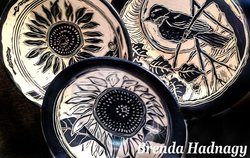 A native of Brooklyn, NY, Carroll Dorrell-Hightower moved to Colorado Springs 22 year ago. She learned pottery at the Senior Center and she has been enjoying pottery for the last eleven years. For this show, she has created hand-built functional small dishes and sushi plates with her glazes being the focal point of her work. “I see my pieces as lovable, beautiful, and pleasing to the eye,” she says. “Making…functional pottery pieces means a lot to me. I know that my pottery can be used just about every day,” she adds. You can find her artwork at Cottonwood Center for the Arts and at 45degreegallery.com 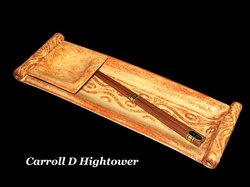 Potter Madalyn Kae discovered her passion for clay over 40 years ago. Most of her work is sculptural but for this show she made an exception. “I love to do work that makes people smile, whimsical, sometimes fanciful,” she says. For this show she made functional pottery such as plates and bowls inspired by a puppy she rescued last year. “My new puppy is a tri-color border collie and she is a pistol, always making us laugh...This small ball of joy has grown into a 45-pound best friend,” she adds. She decided to express their friendship through her dog series. When the artists of “Women in Clay” approached Colorado oil painter Jean Cuchiaro to paint flowers as a colorful backdrop to their clay creations, she felt honored by their challenge. “I've always had a creative spirit, eager to come up with or try different methods of communicating my appreciation and wonder about all the colors, patterns and characters in my surroundings,” she explains. An avid gardener, Jean loves to paint flowers as well as landscapes, farm animals, birds and wildlife. Her paintings for this show represent all the wonder and delight to be found in and around a Summer garden in Colorado, with colors that vibrate in the sunlight through transparent petals and leaves, such as “Pink Dahlia” (Oil, 24”x36”) “Morning Glories” (Oil, 36”x24”) and “Pink Poppy” (Oil, 20”x30”). Her favorite work on this show is the “Tulip,” (Oil 24” x 30”) because “the striking composition and range of values makes it almost a beautiful abstraction of nature.” Along with it, she has included a large collection of “Posies” (Oil, 4”x4”) and four 12”x12” oil paintings depicting a poppy, a morning glory, a sunflower and a petunia. She also added succulents to the mix. This collection is called “Succulents for a Brown Thumb,” all deep floating frames measuring 4”x4”x2.5”. The reason, Jean explains, is that “I have become intrigued with all the diversity in colors and patterns… as a gardener, I really appreciate that they are drought tolerant and extremely easy to grow in the Colorado landscape...and because I want to add these to my garden now also!” she says. Find Jean’s artwork on her website Jeancuchiaro.com, at Commonwheel in Manitou Springs, on commonwheel.com, and at Squash Blossom gallery in Old Colorado City.
Did you enjoy this post? Leave as a comment and let us know! We’d love to hear from you! Want more local art news delivered to your inbox? Sign up for Commonwheel newsletter here.
Step out of your comfort zone and feel the exhilaration of trying something new. Explore the possible creative ways of displaying and enjoying your beloved jewelry pieces by integrating diverse artistic mediums. You might find that an exotic pendant can be displayed in your home on an interesting wall art piece when it is not hanging around your neck. A gorgeous ring or bracelet may have a place to rest in a small shadow box that has a poem or haiku specifically written for the piece of personal adornment. A painting can become three dimensional when adding another artistic component. The possibilities are endless. Can you visualize a wonderful piece of pottery embellished with a removable piece of jewelry
|
Juanita Canzoneri
|
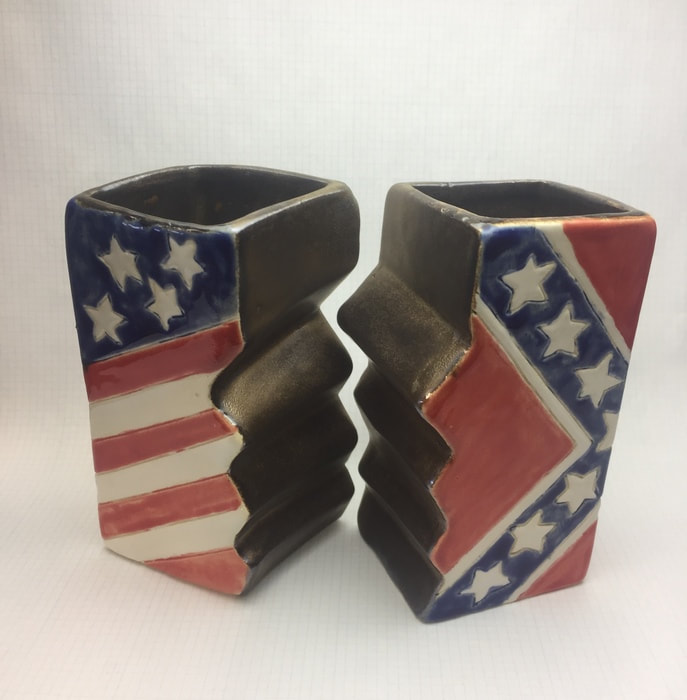
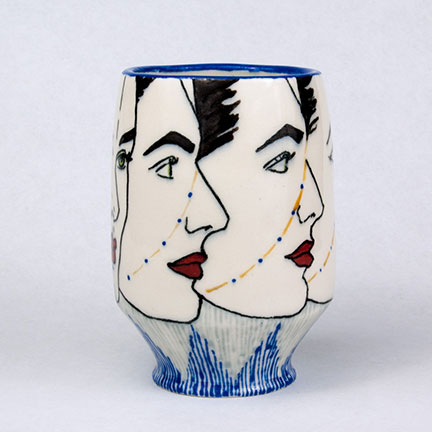
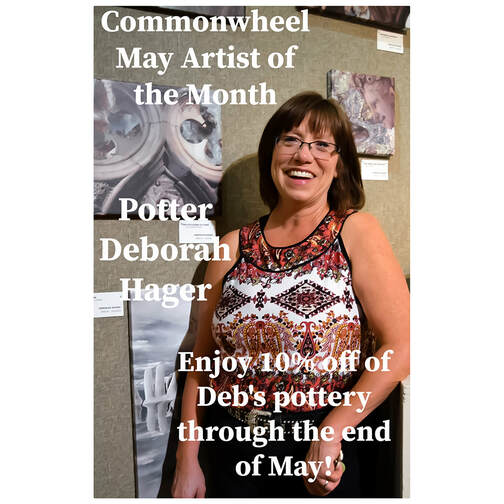
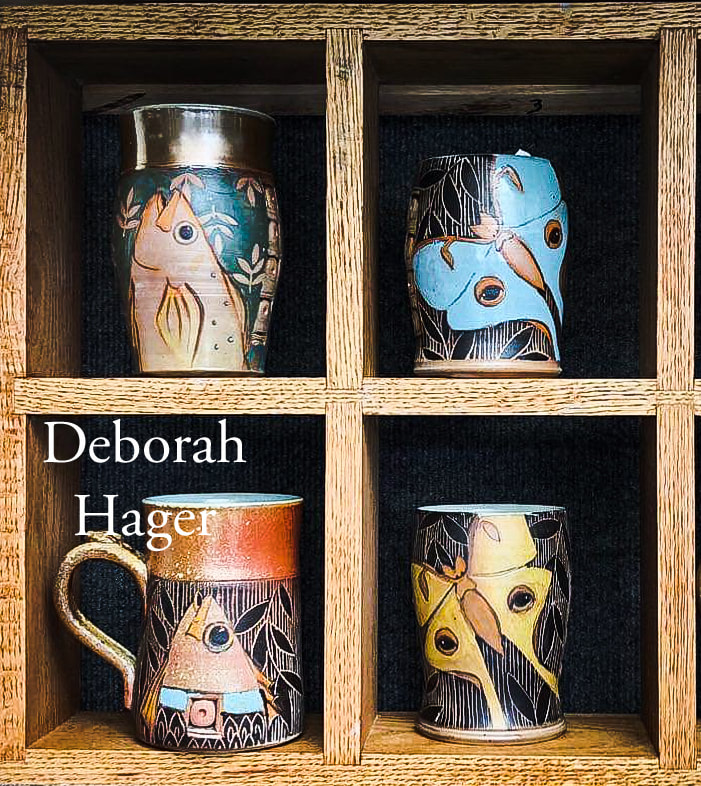
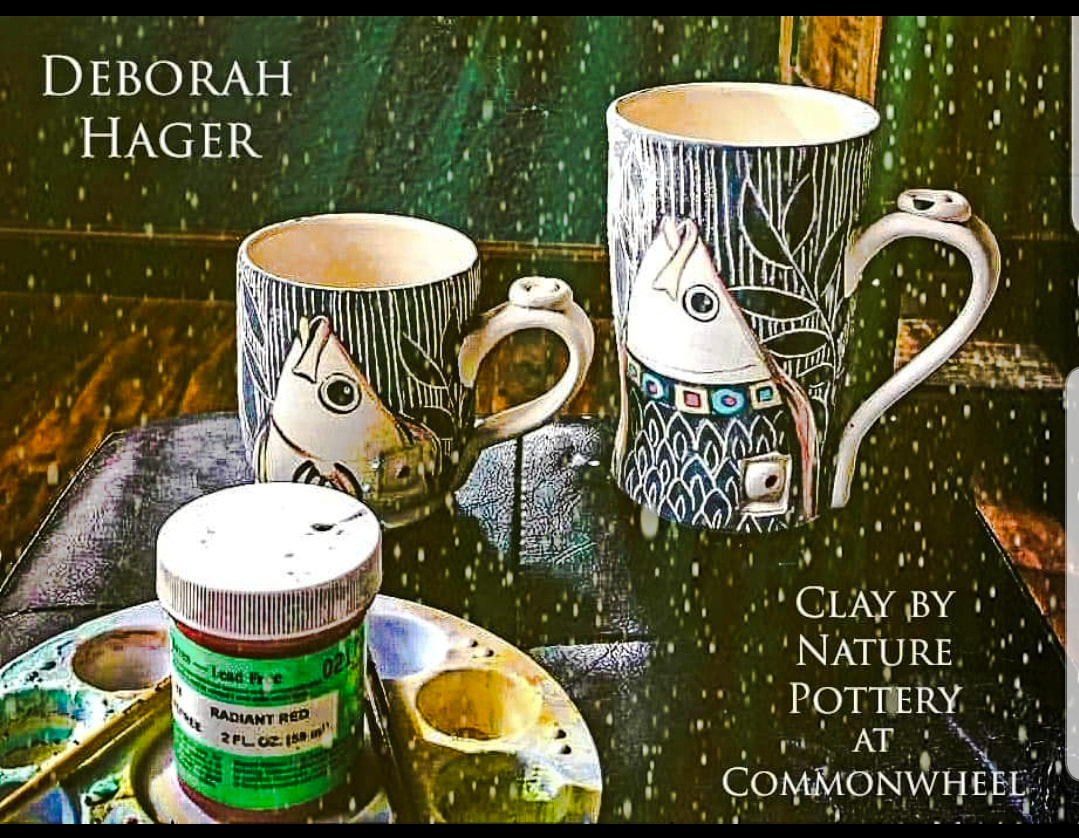
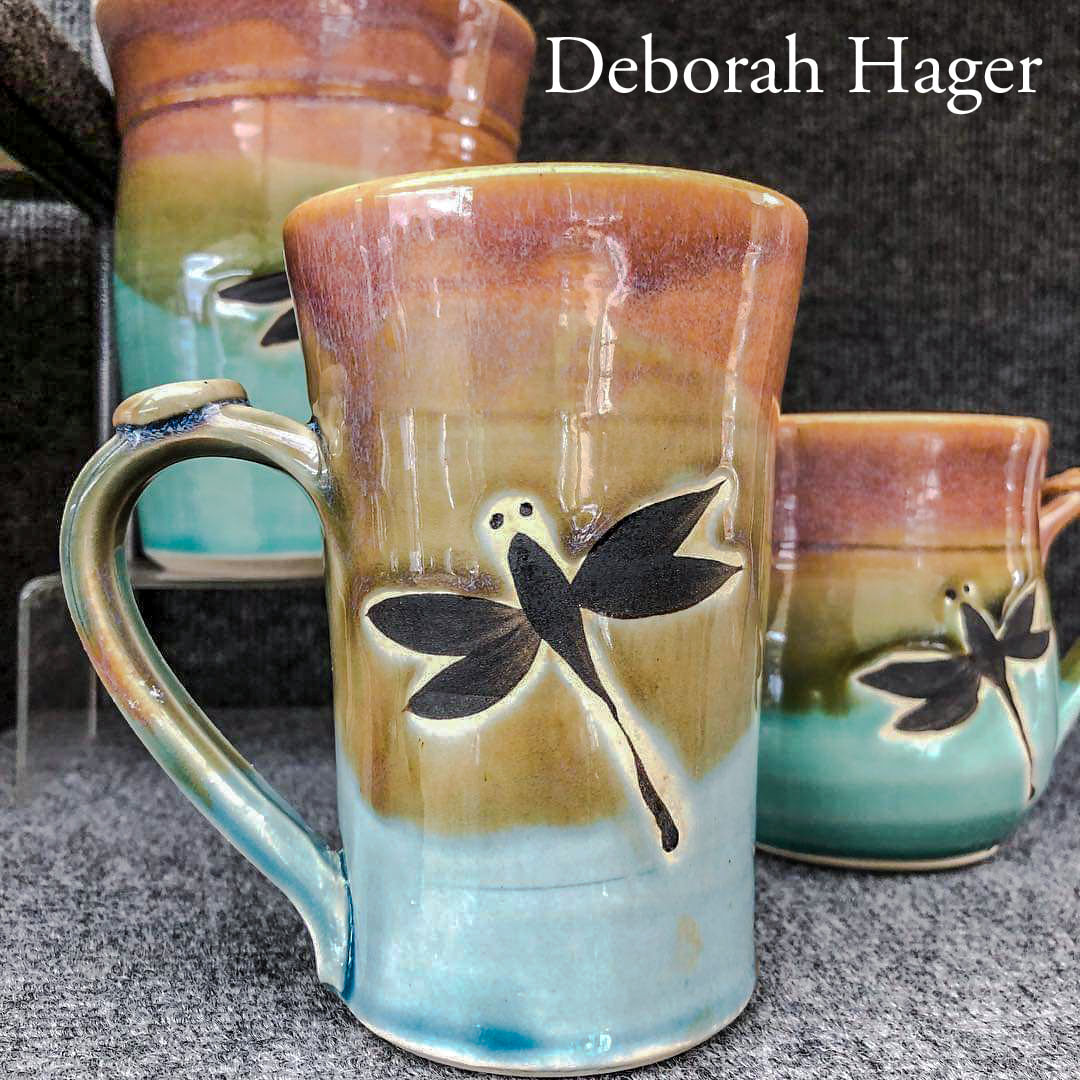
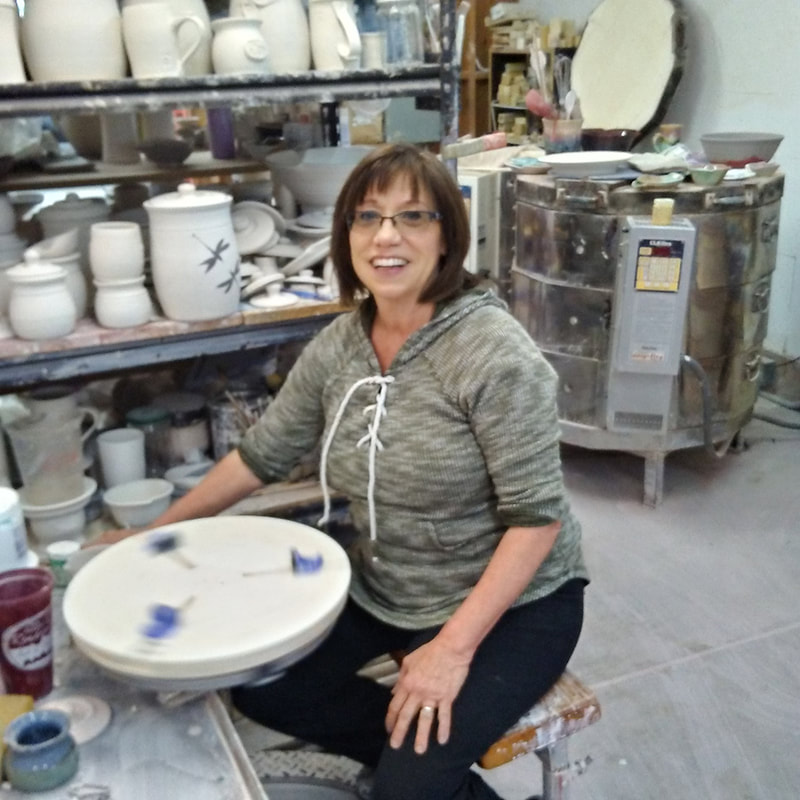
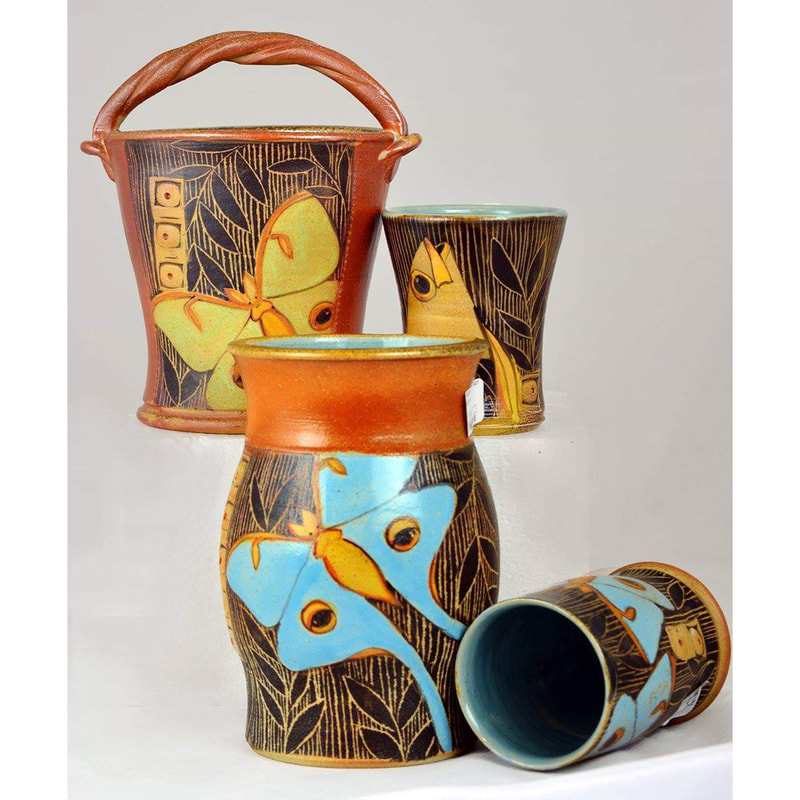
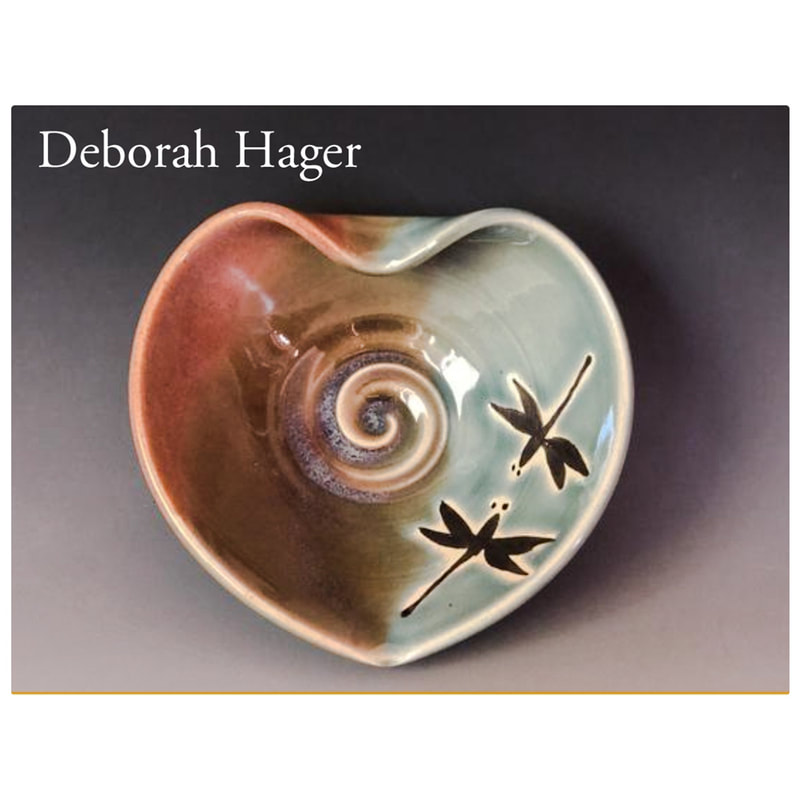
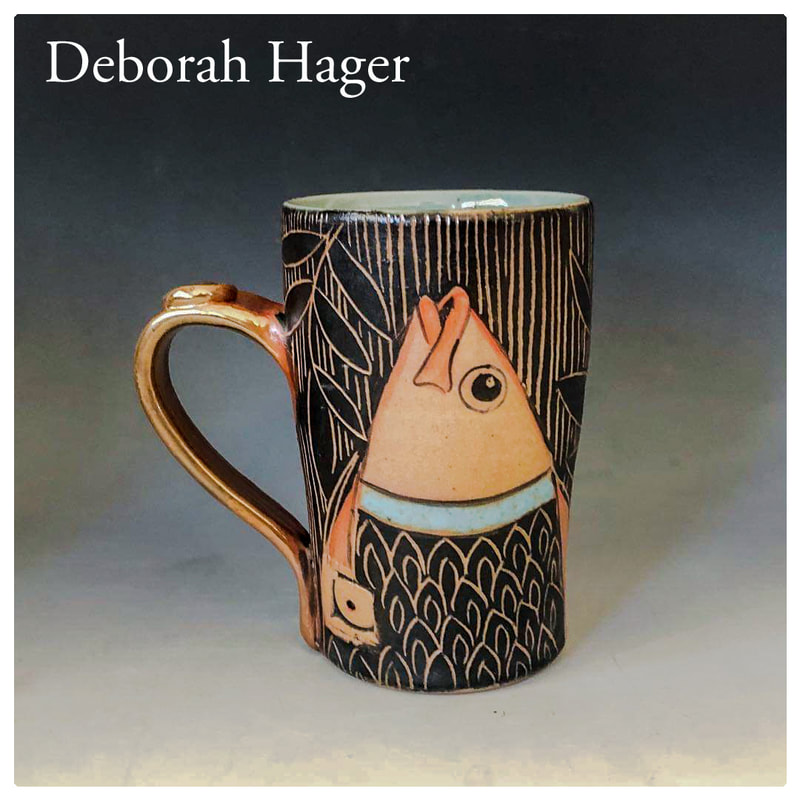
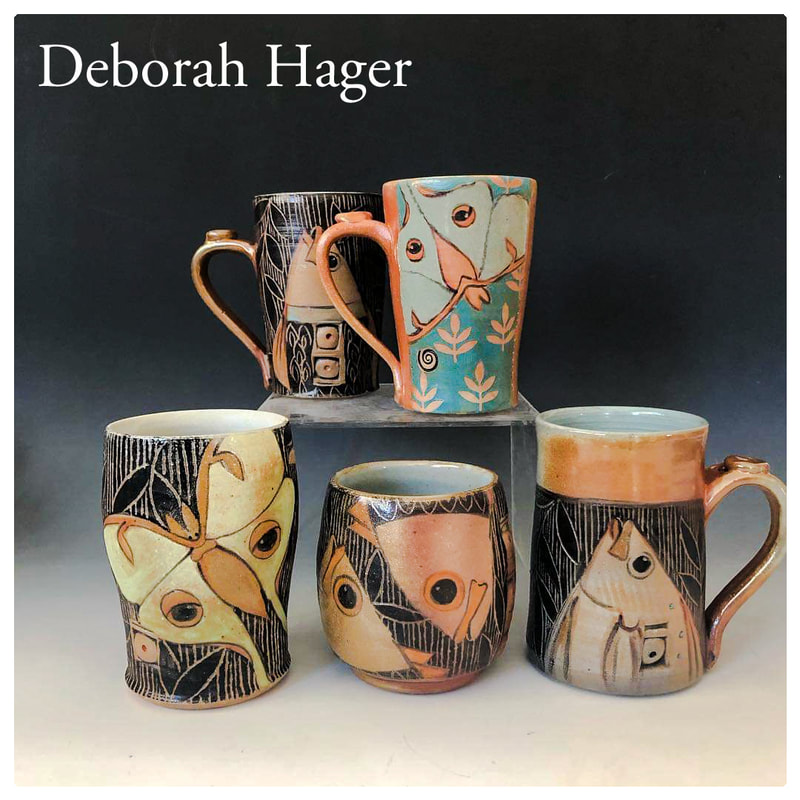
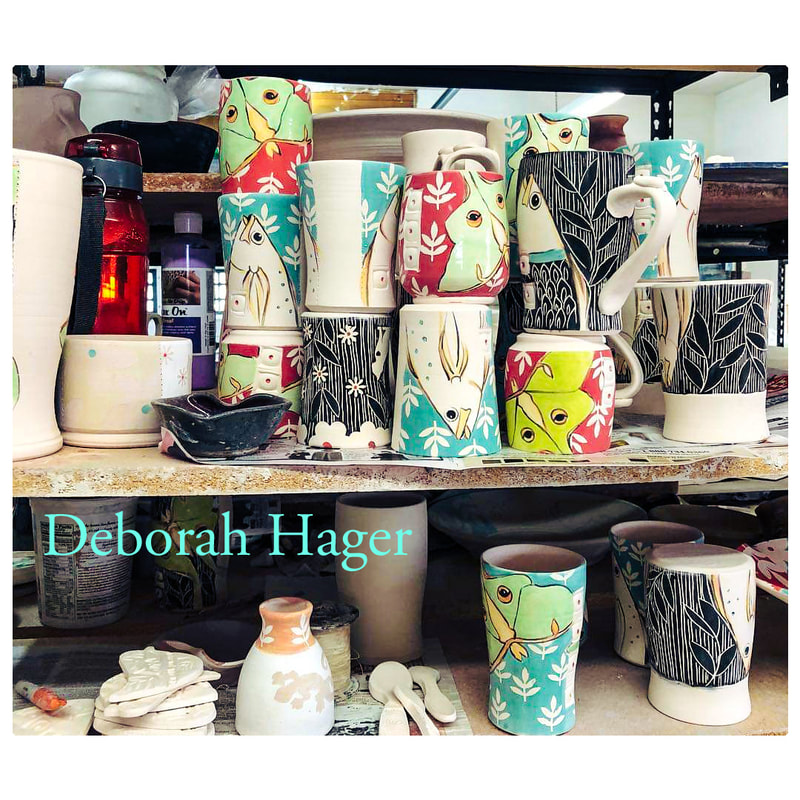
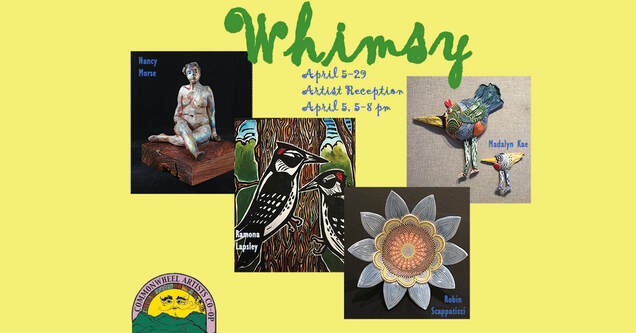
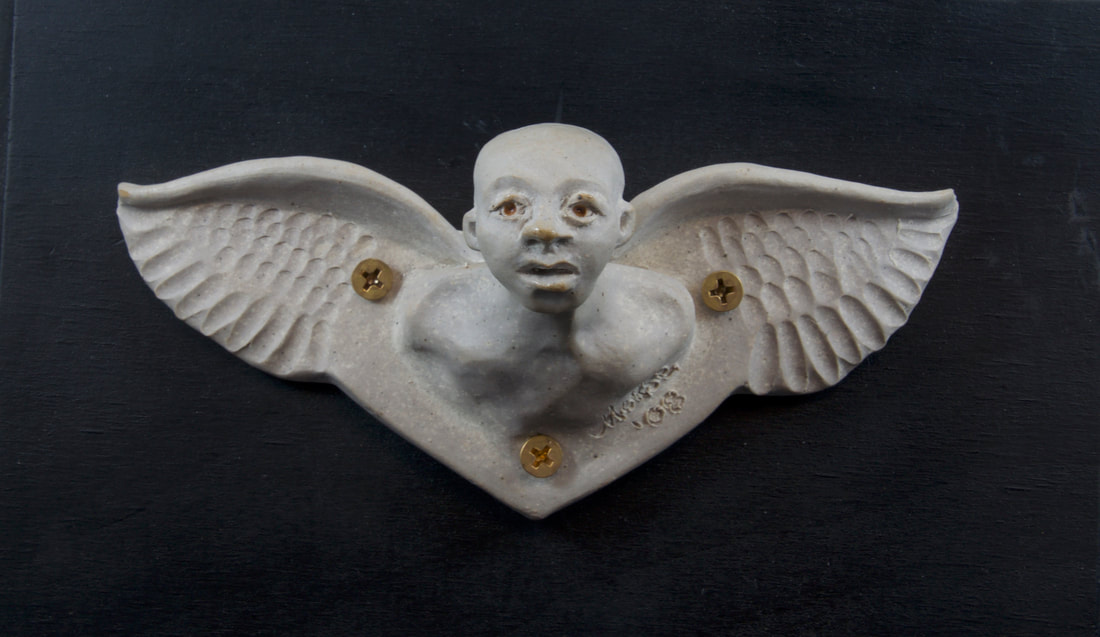
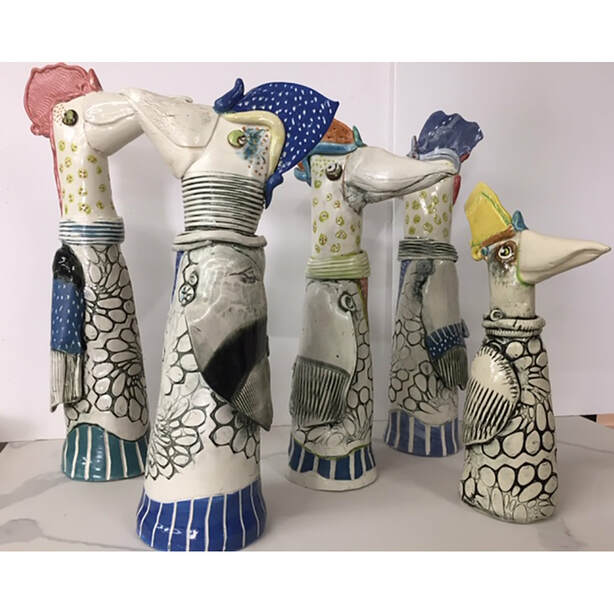
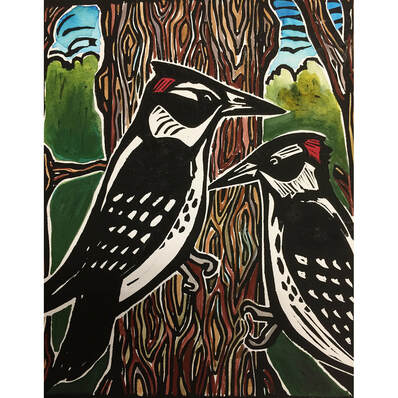
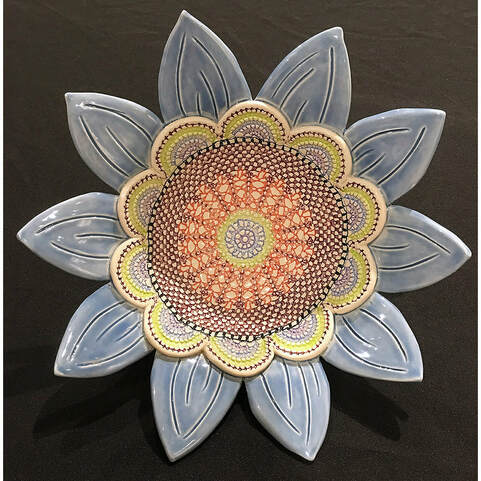
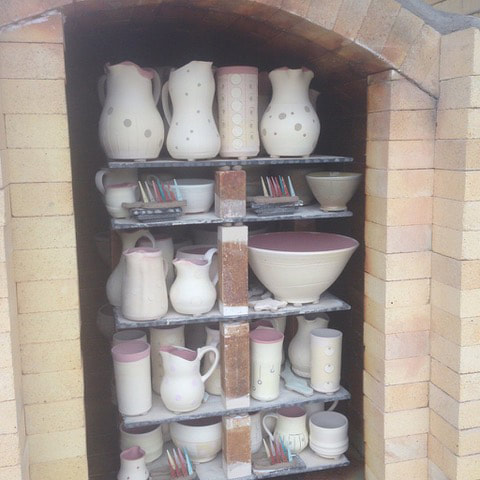
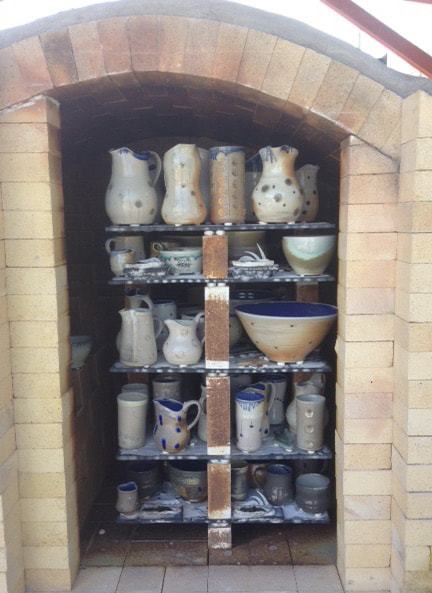
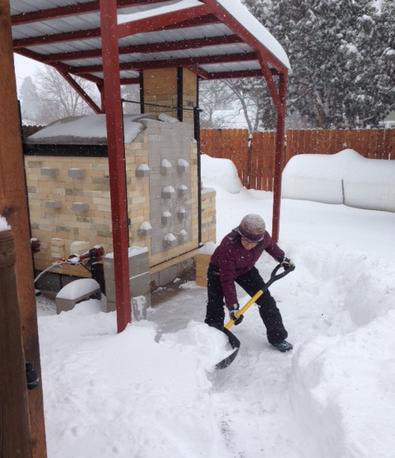
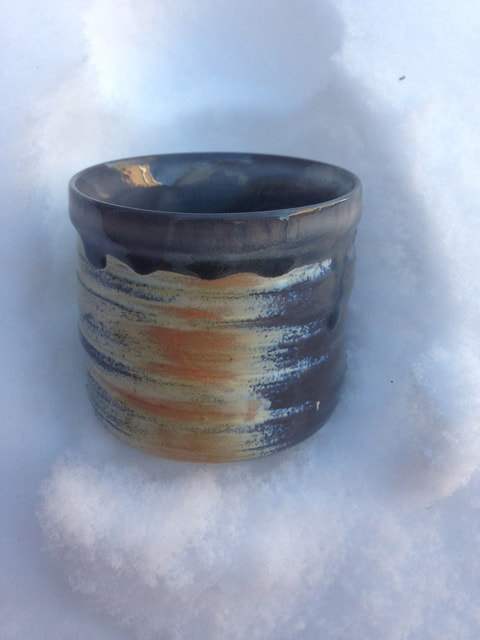
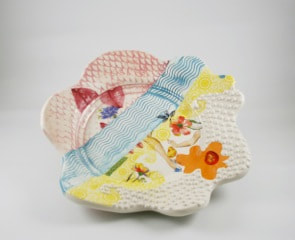
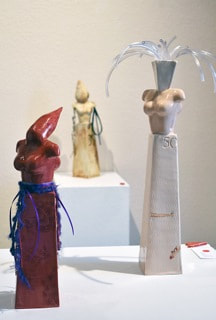
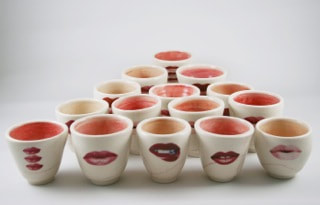
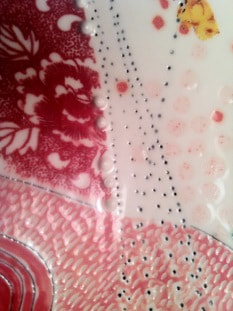
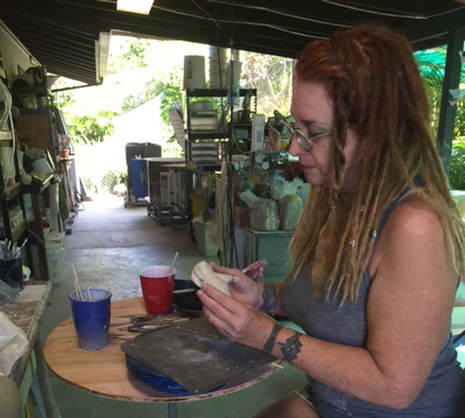
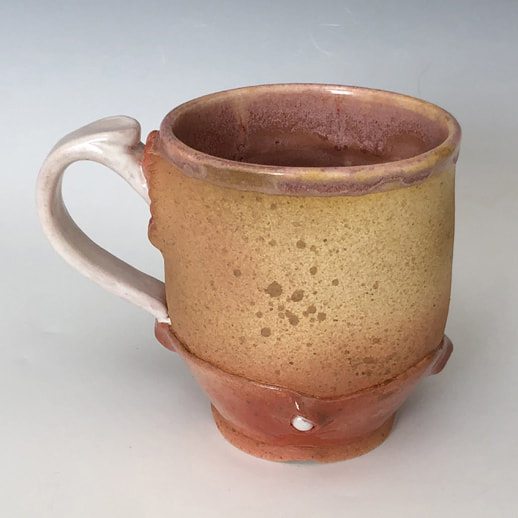
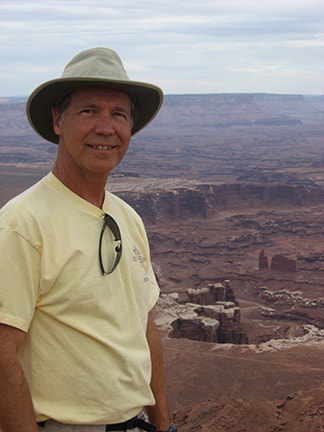
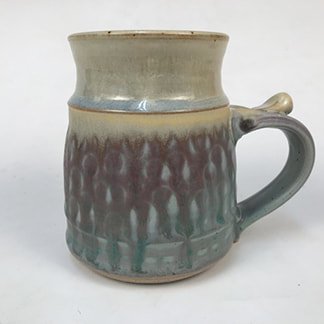
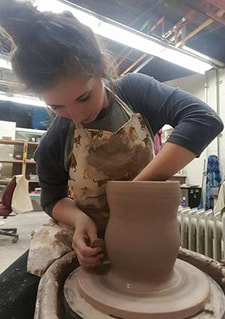
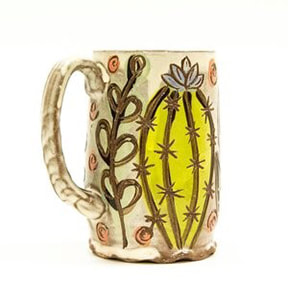
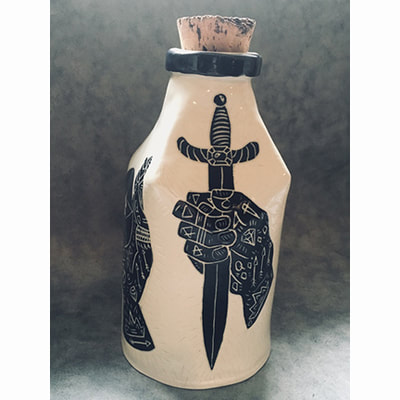
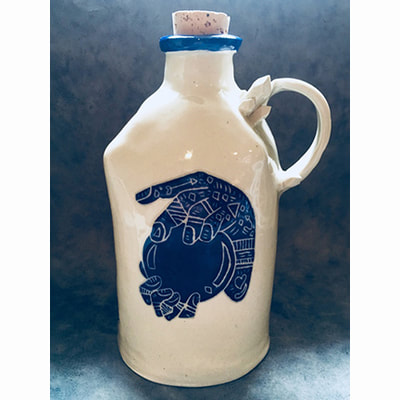
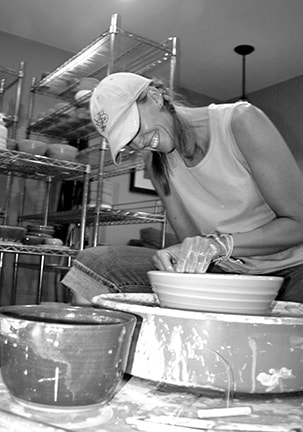
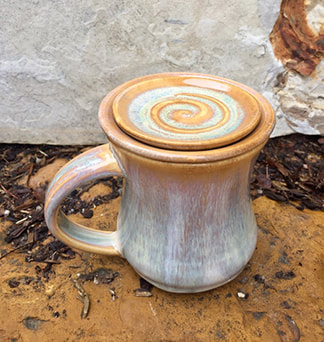
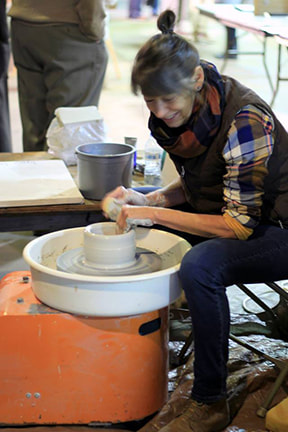
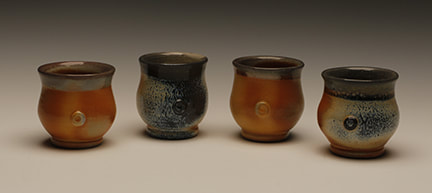
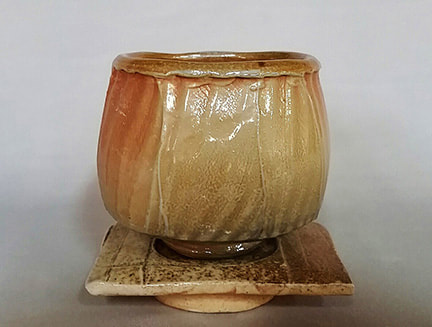
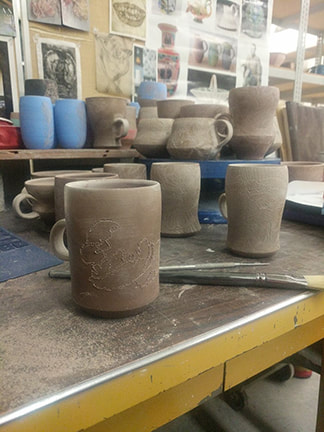
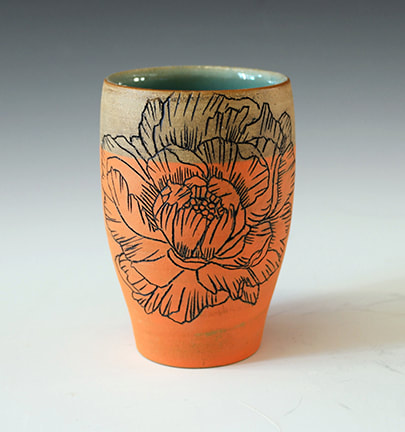
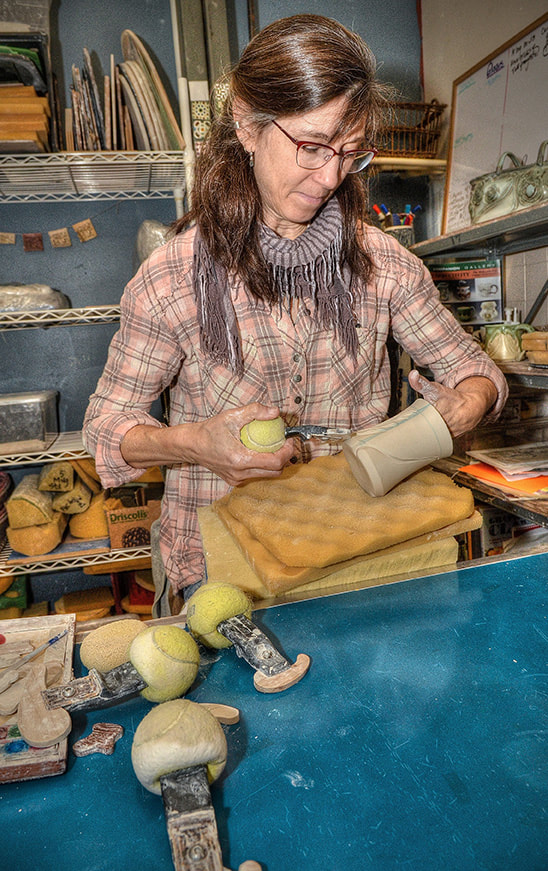
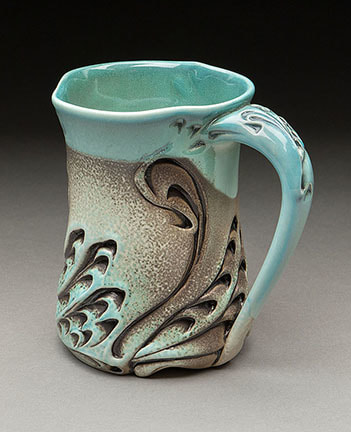
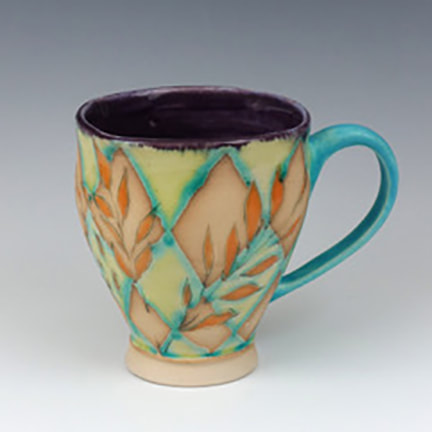
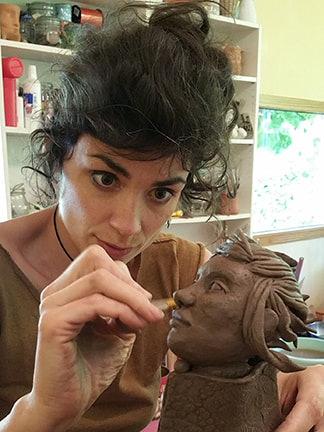
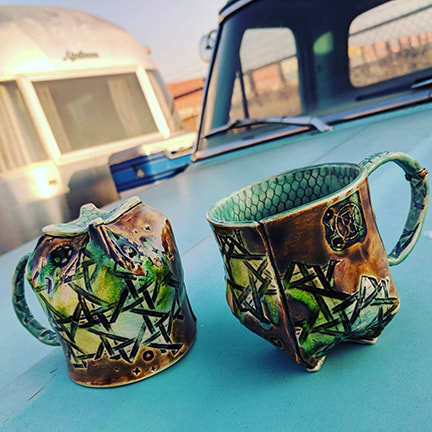
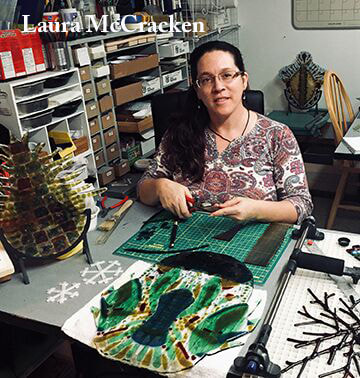
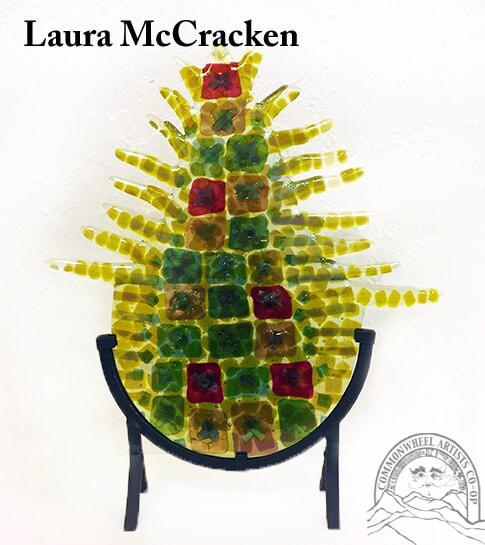
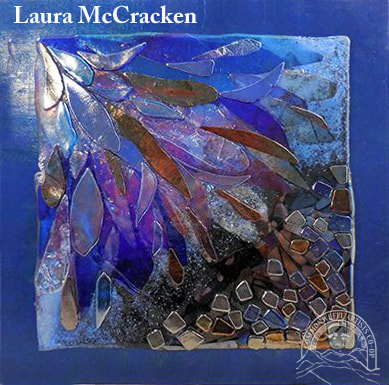
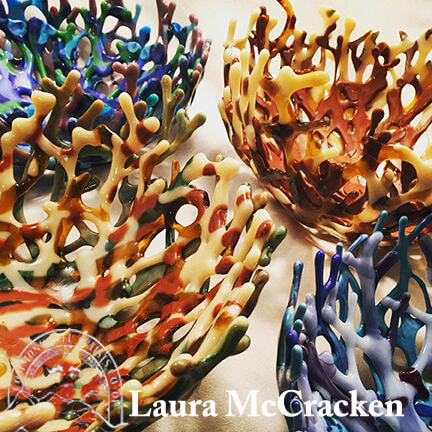
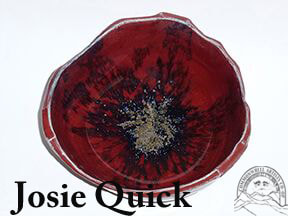
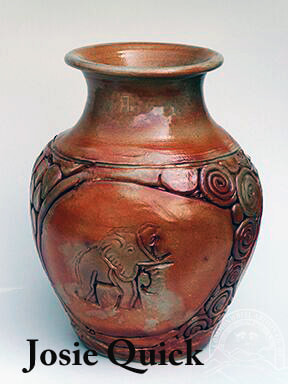
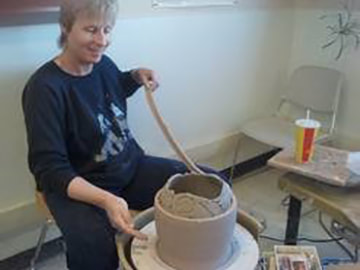
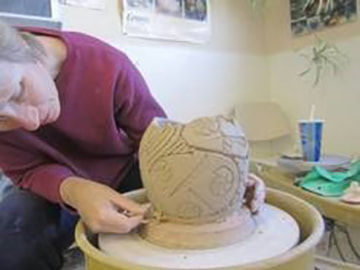
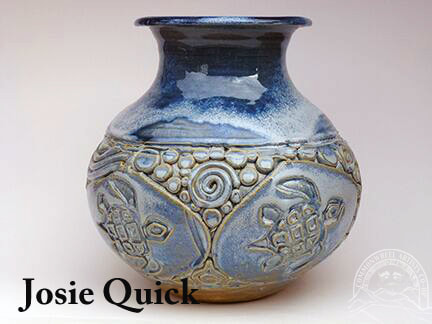

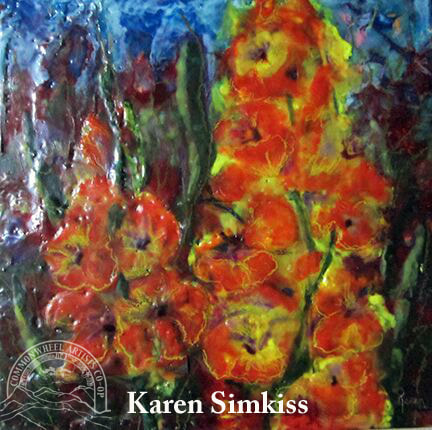
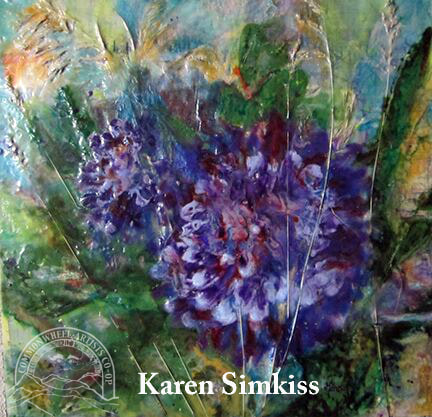
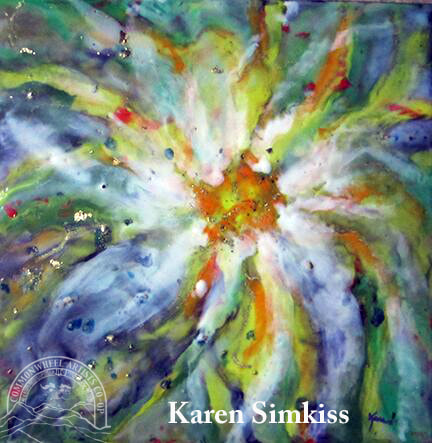
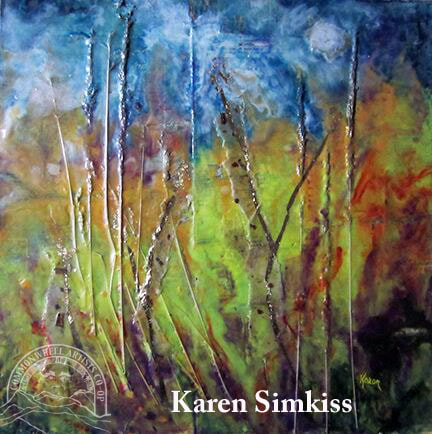
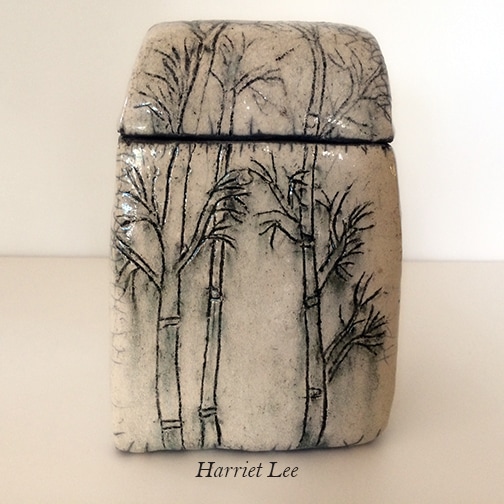
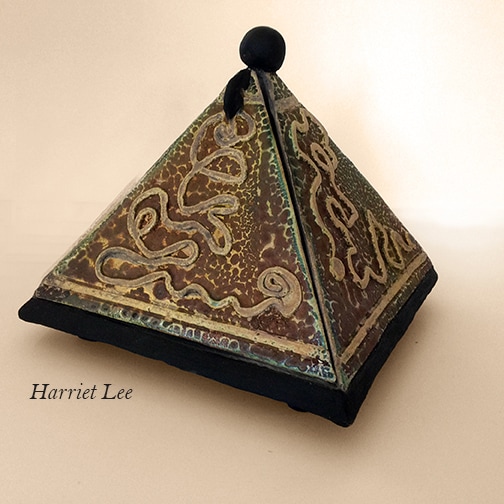
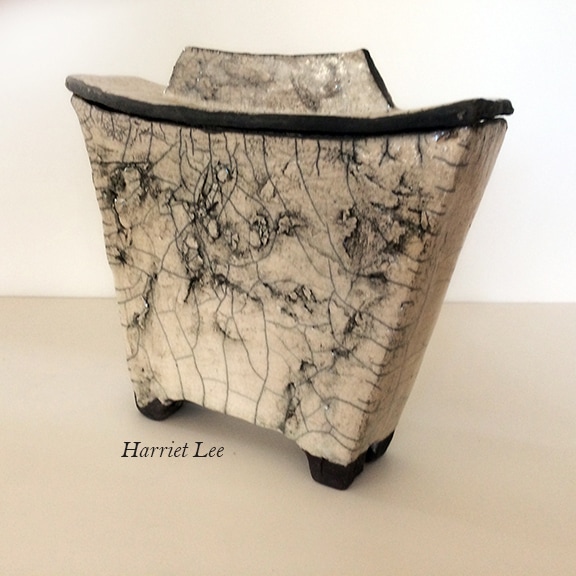
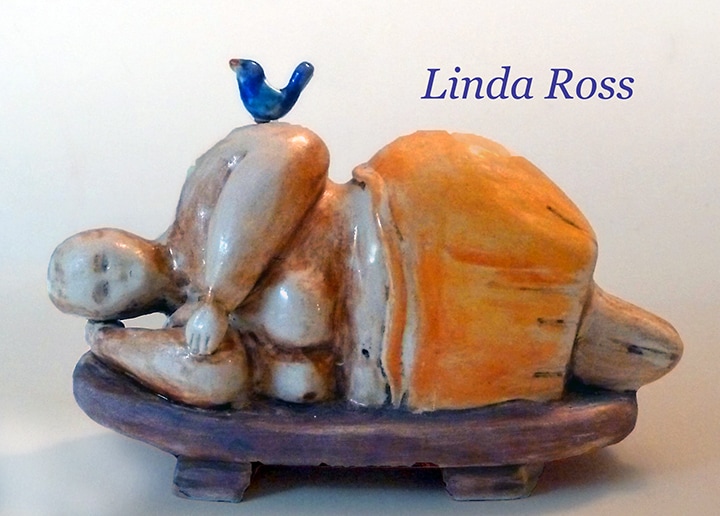
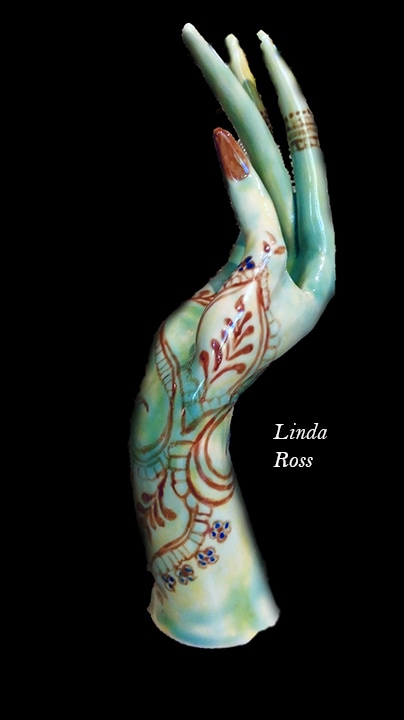
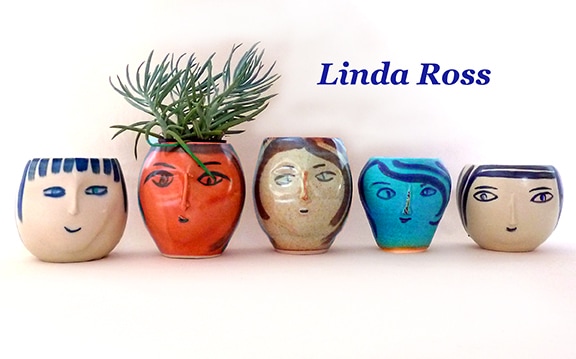
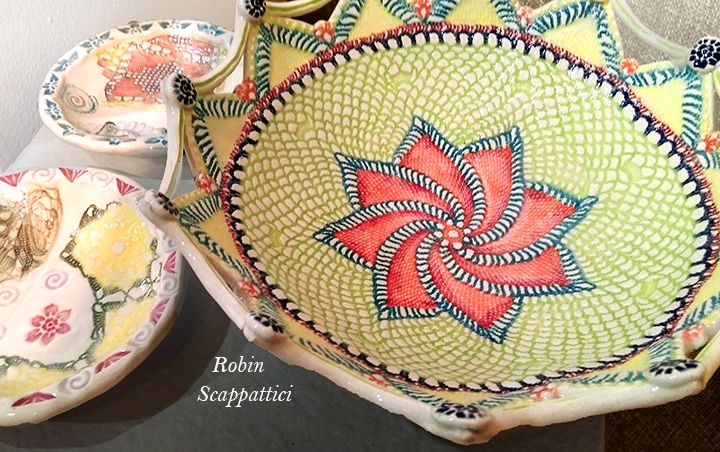
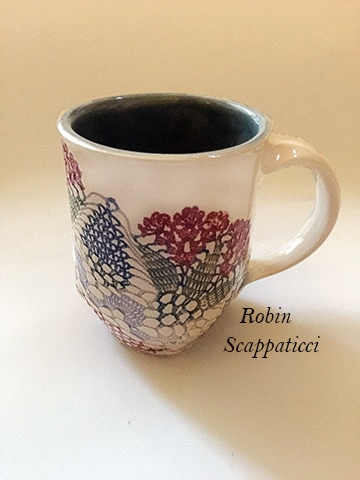
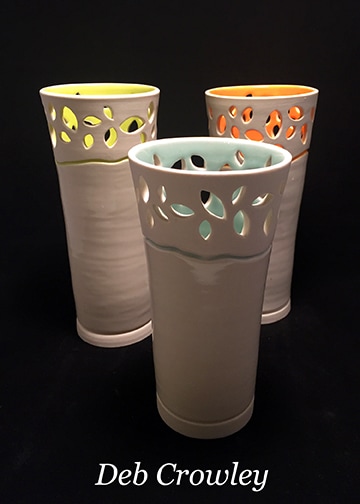
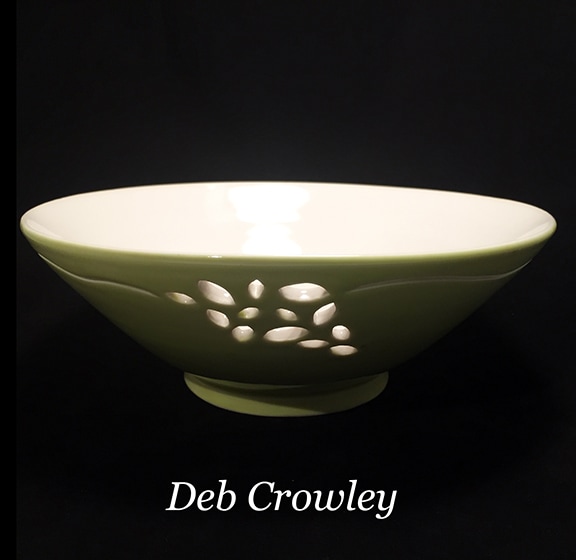
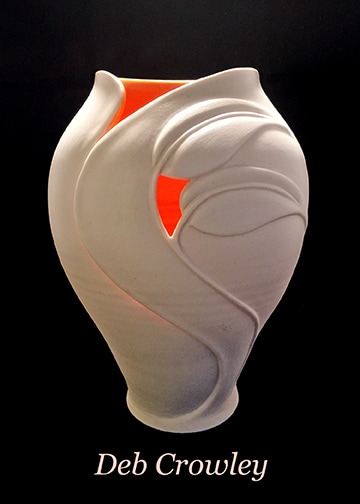
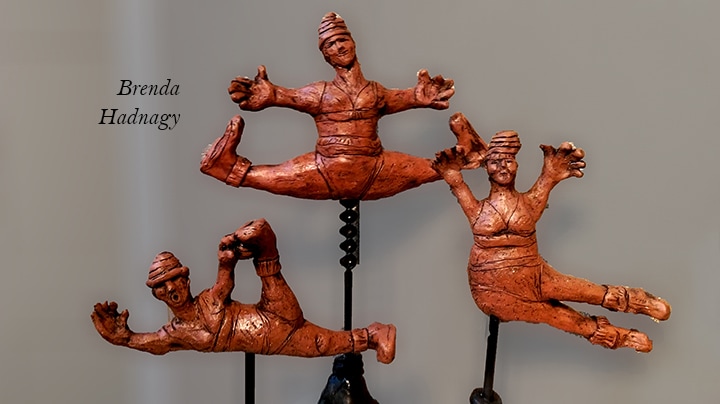
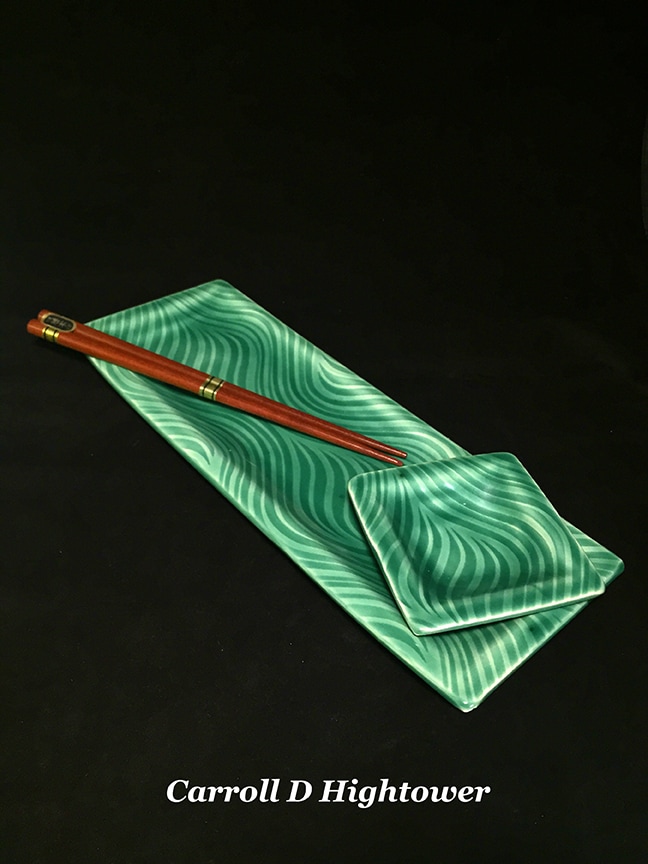
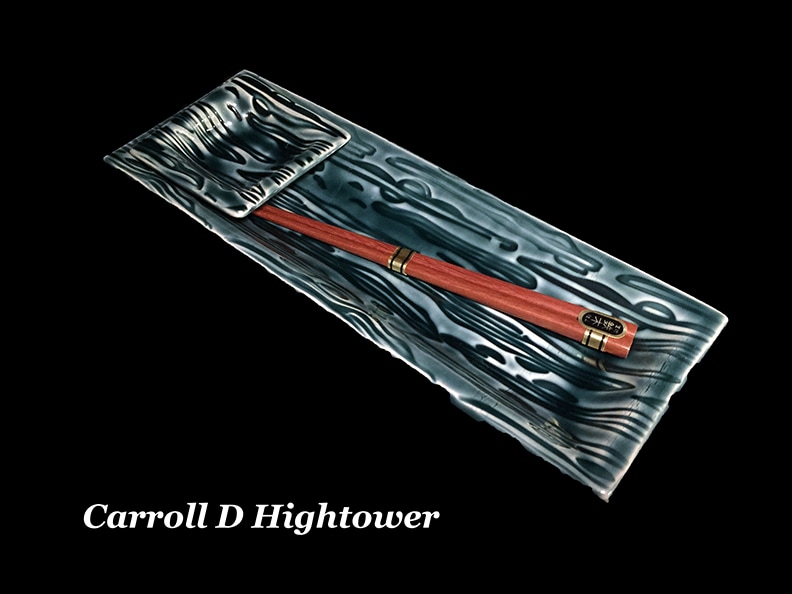
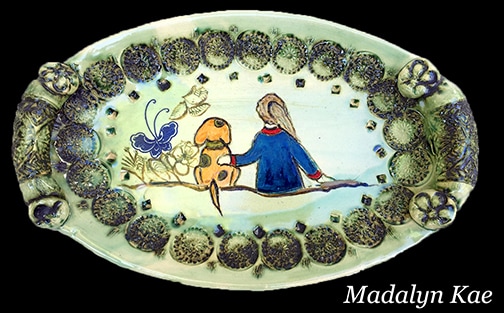
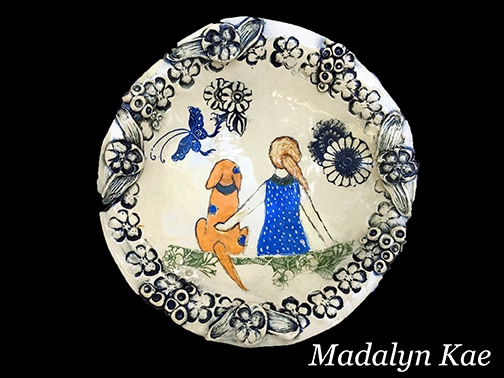
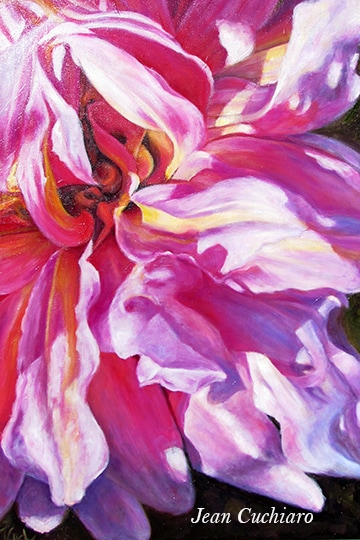
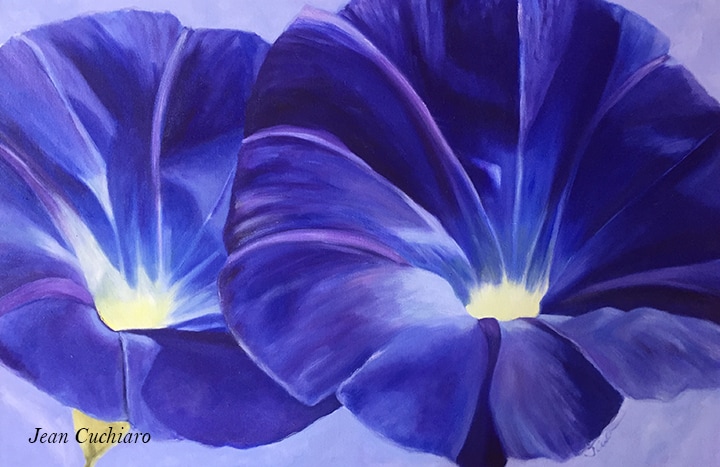
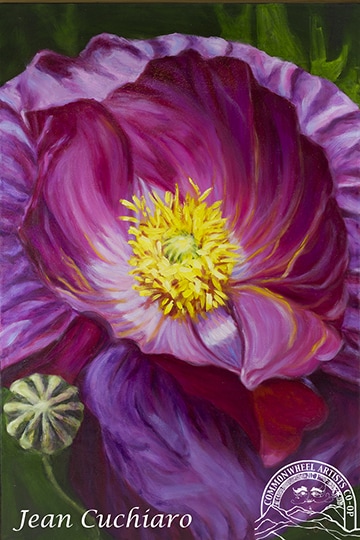
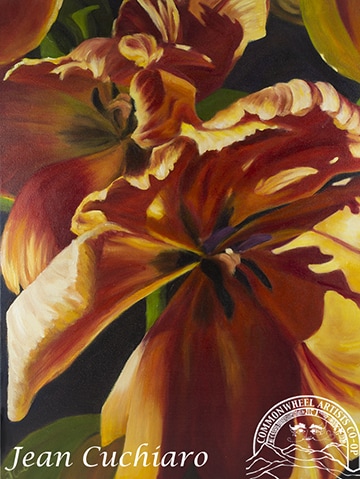
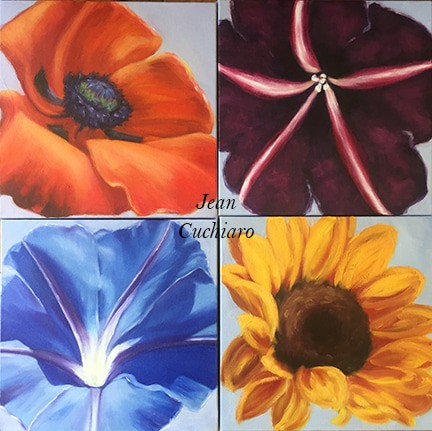
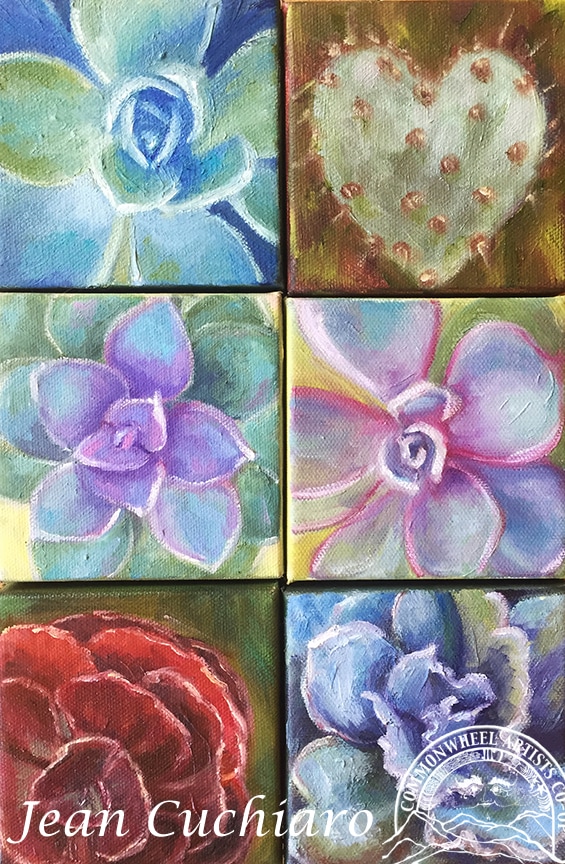
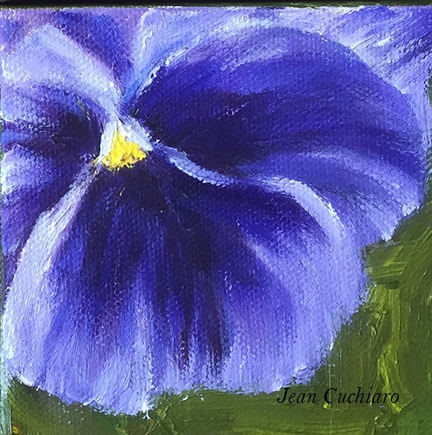
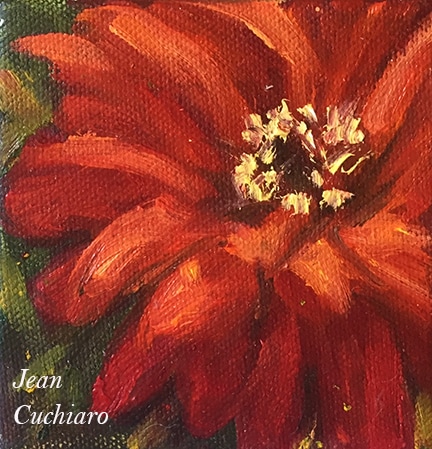
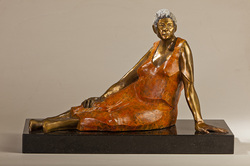
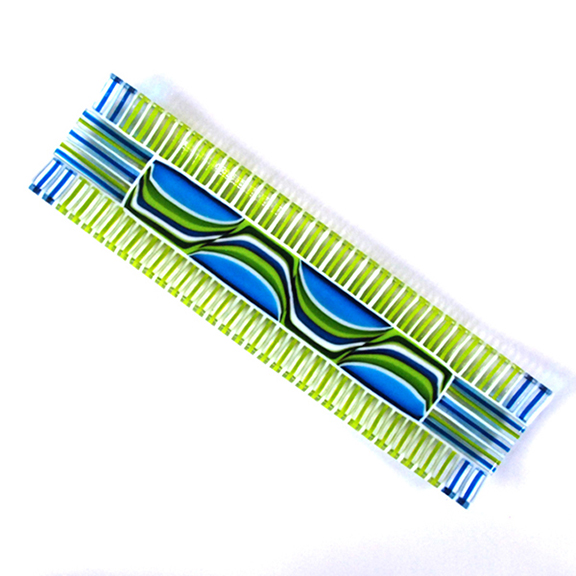
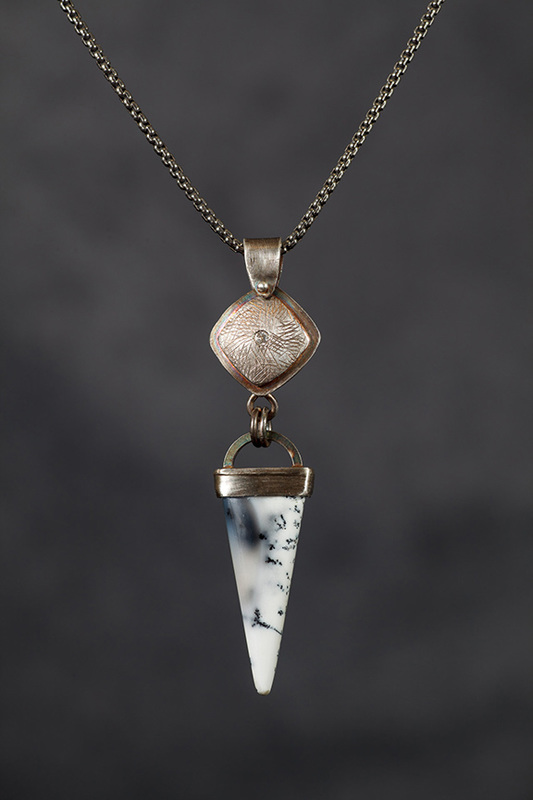
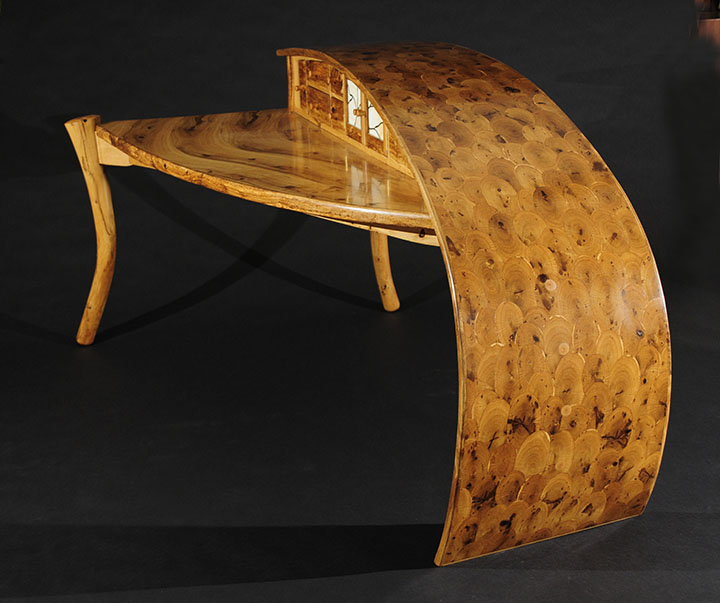
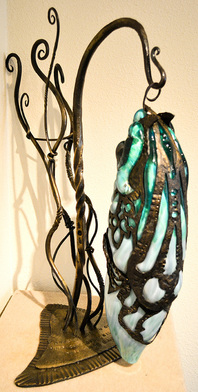
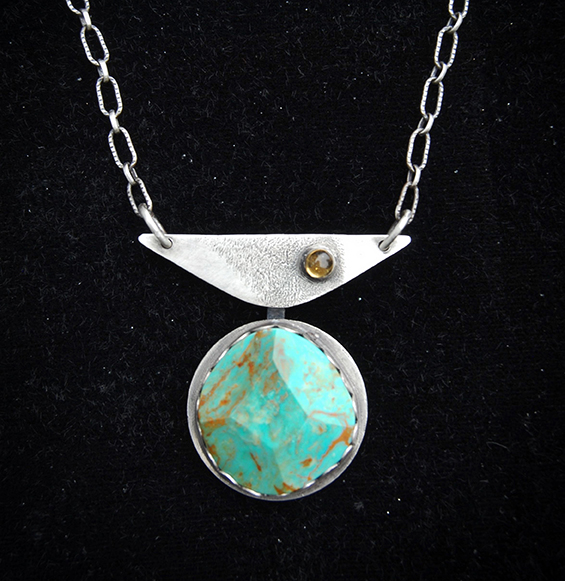
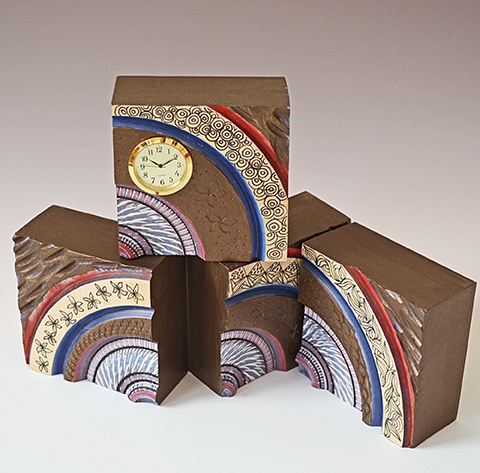
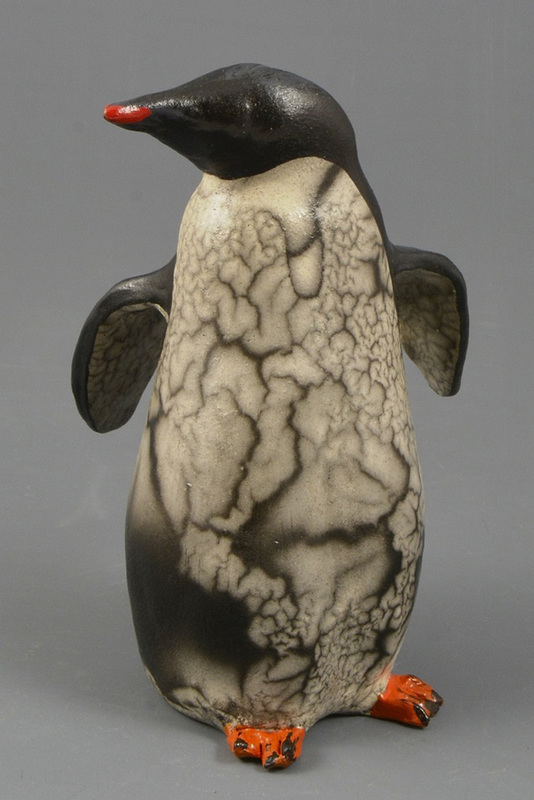
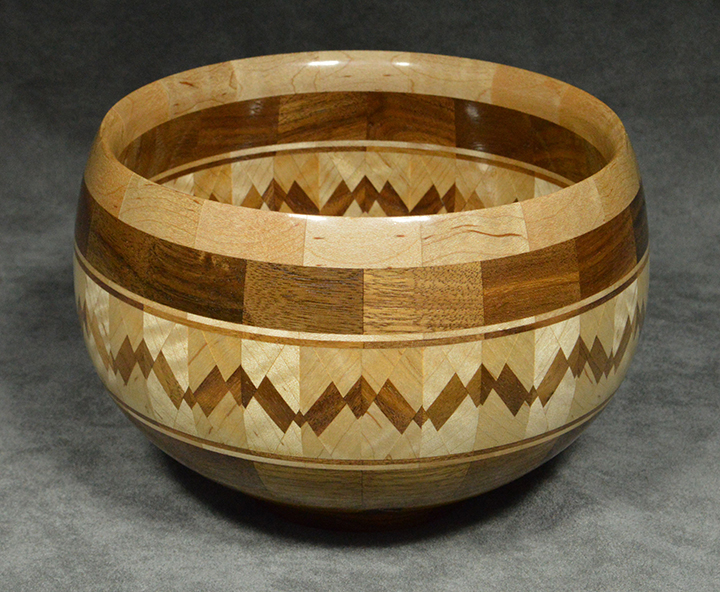
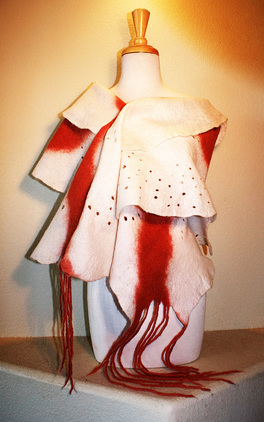
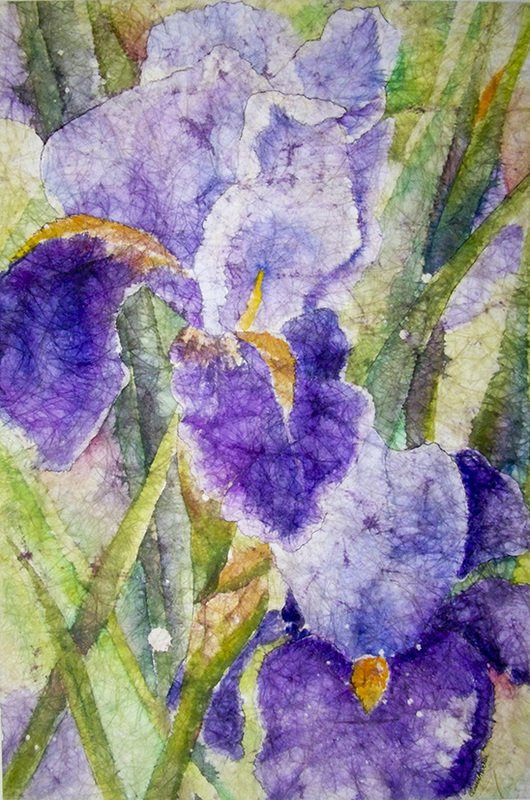
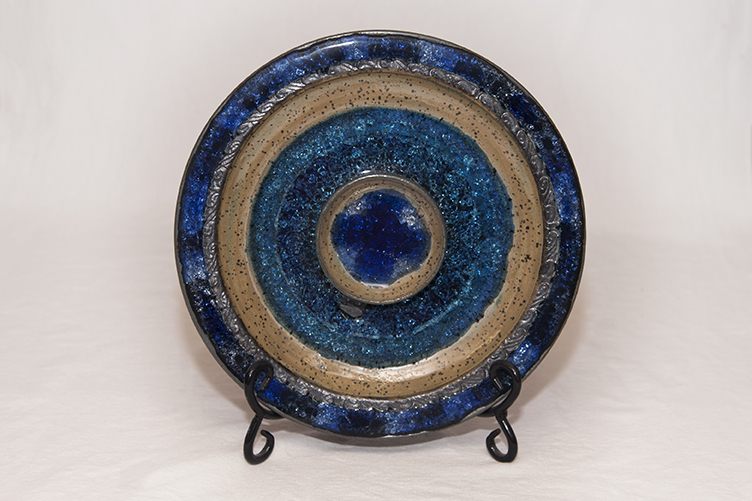
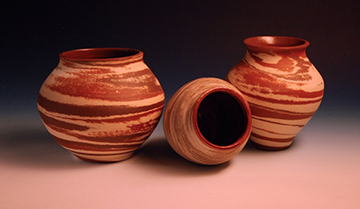
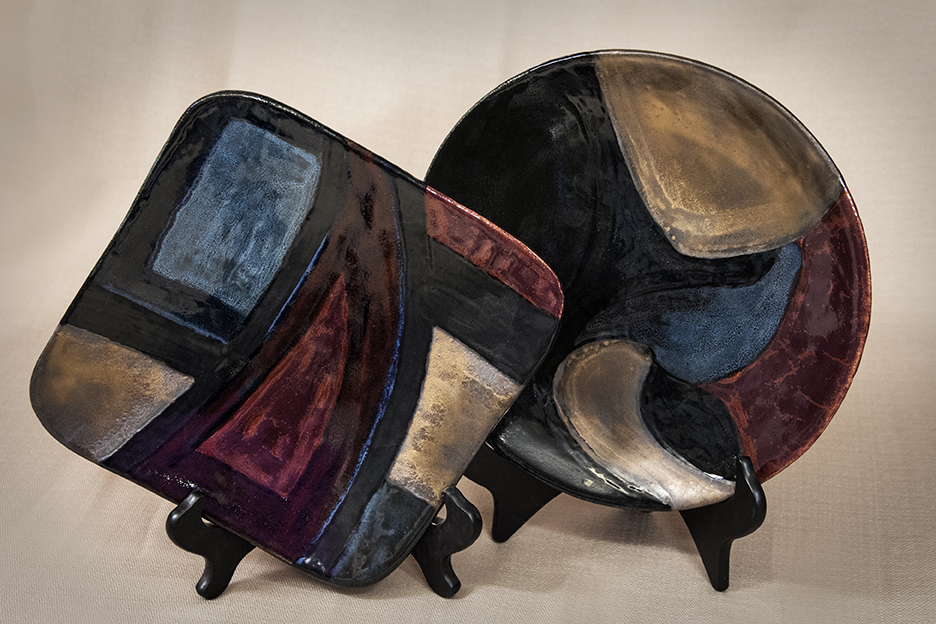
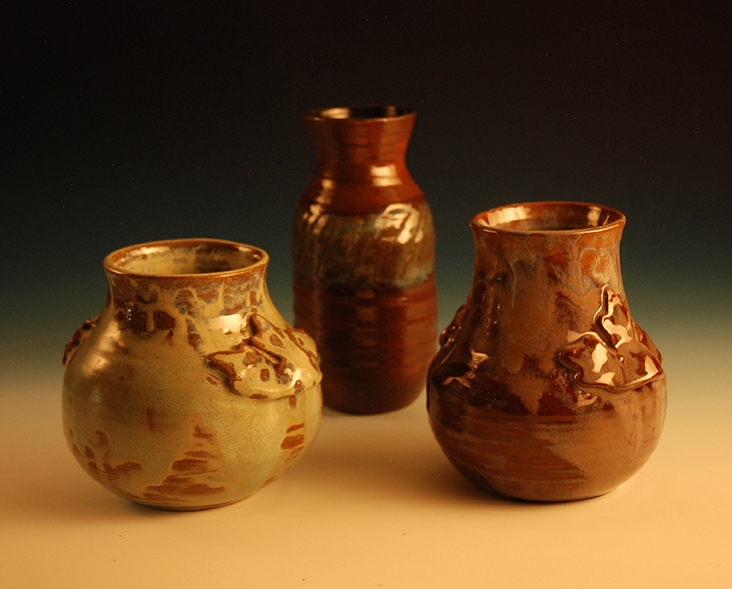
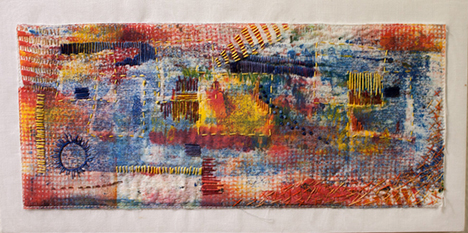
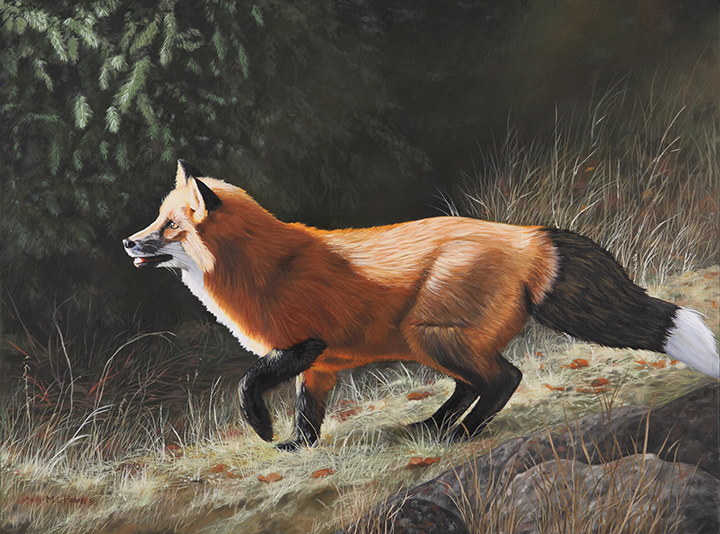
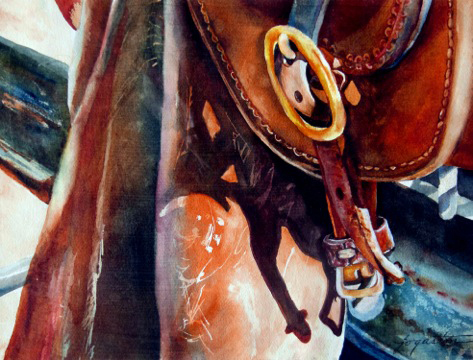
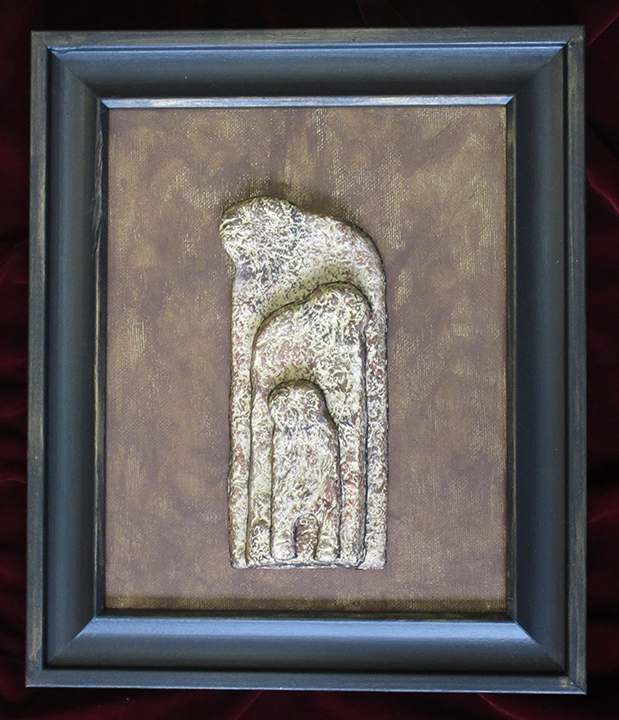
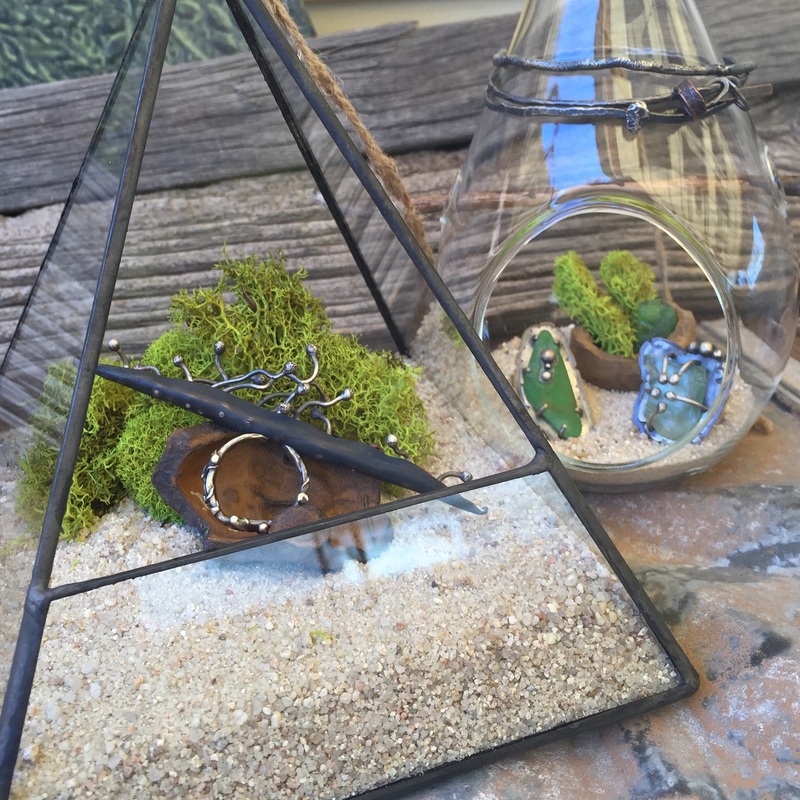
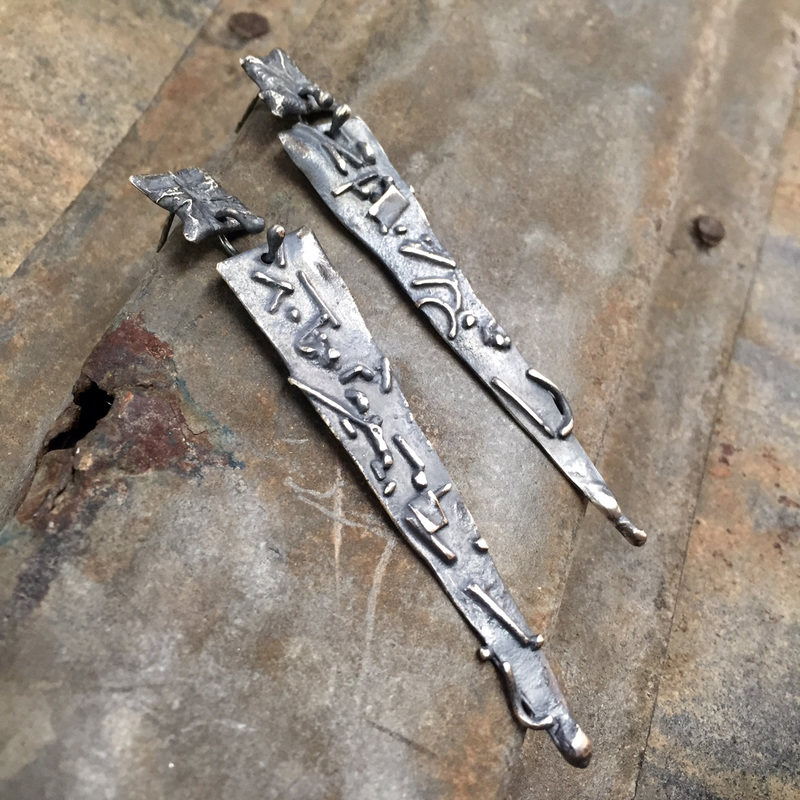
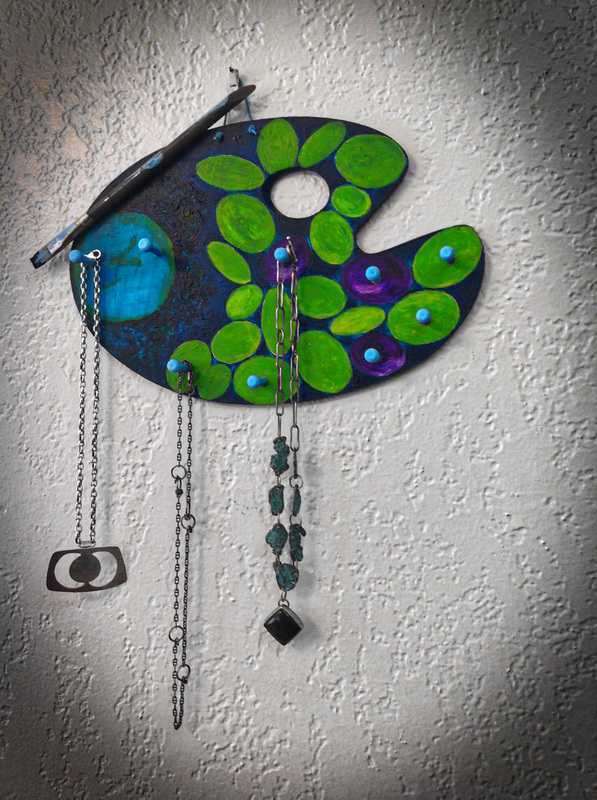
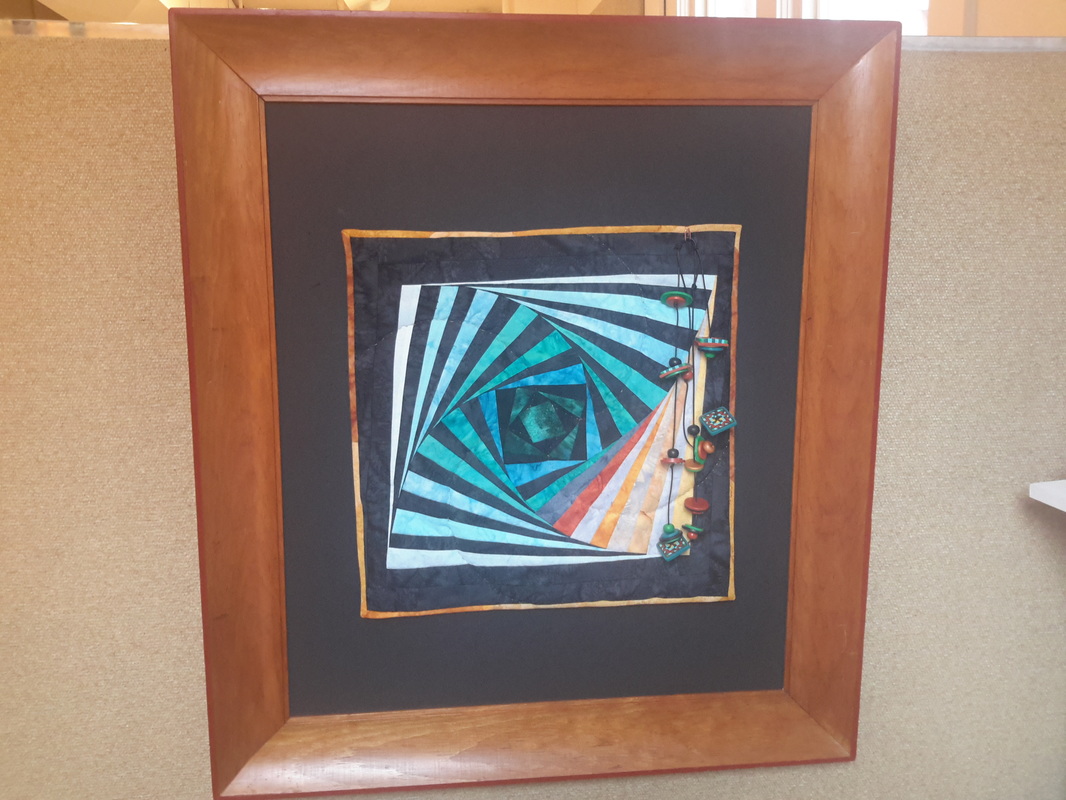
 RSS Feed
RSS Feed